Scenes from Rethink 2025
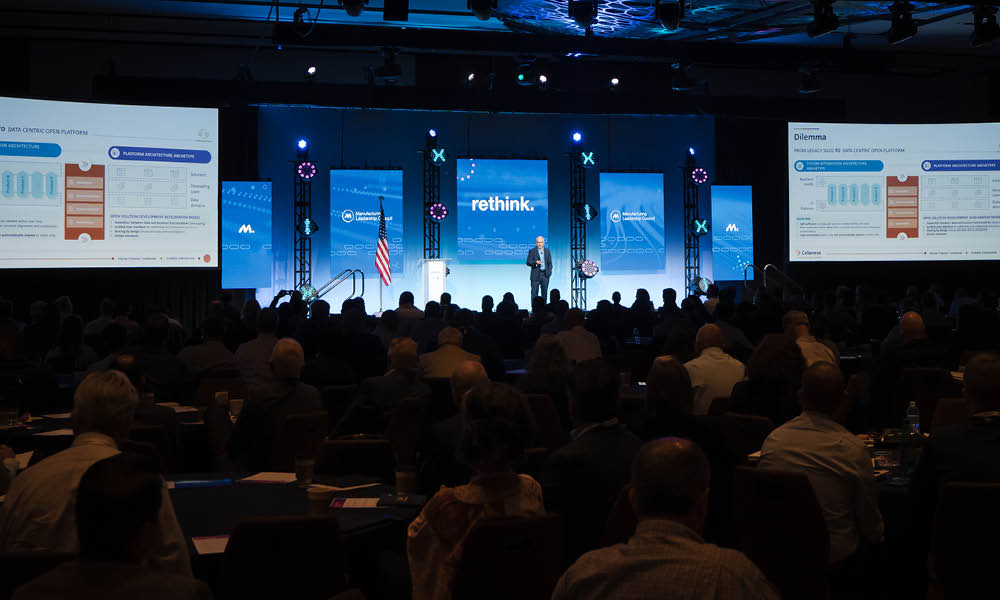
MLC’s signature event broke records again this year as manufacturers gathered to accelerate their journeys to Manufacturing 4.0.
The Manufacturing Leadership Council hosted the 21st iteration of its signature Rethink event in June at the JW Marriott hotel in Marco Island, Florida. Nearly 500 manufacturing executives, an in-person record, participated in the event over the course of its three days, which consisted of MLC’s annual Council Day meeting, its two-day conference program, and the Manufacturing Leadership Awards gala.
The theme of the event was Accelerating Digital Transformation in Manufacturing. Speakers hailed from Celanese, Siemens, Procter & Gamble, The Hershey Company, Eaton, Whirlpool, Anheuser-Busch InBev, Peterbilt, Husco, and Milo’s Tea, among others.
In a special session, EY gave an overview of economic trends affecting manufacturing. More than 20 technology and service providers demonstrated their innovations. And at the awards gala, more than 160 companies and individuals were honored for their achievements in digital manufacturing.
Following are selected scenes from the 21st Rethink. Photos by David Bohrer, Senior Director, Photography, at the NAM. M

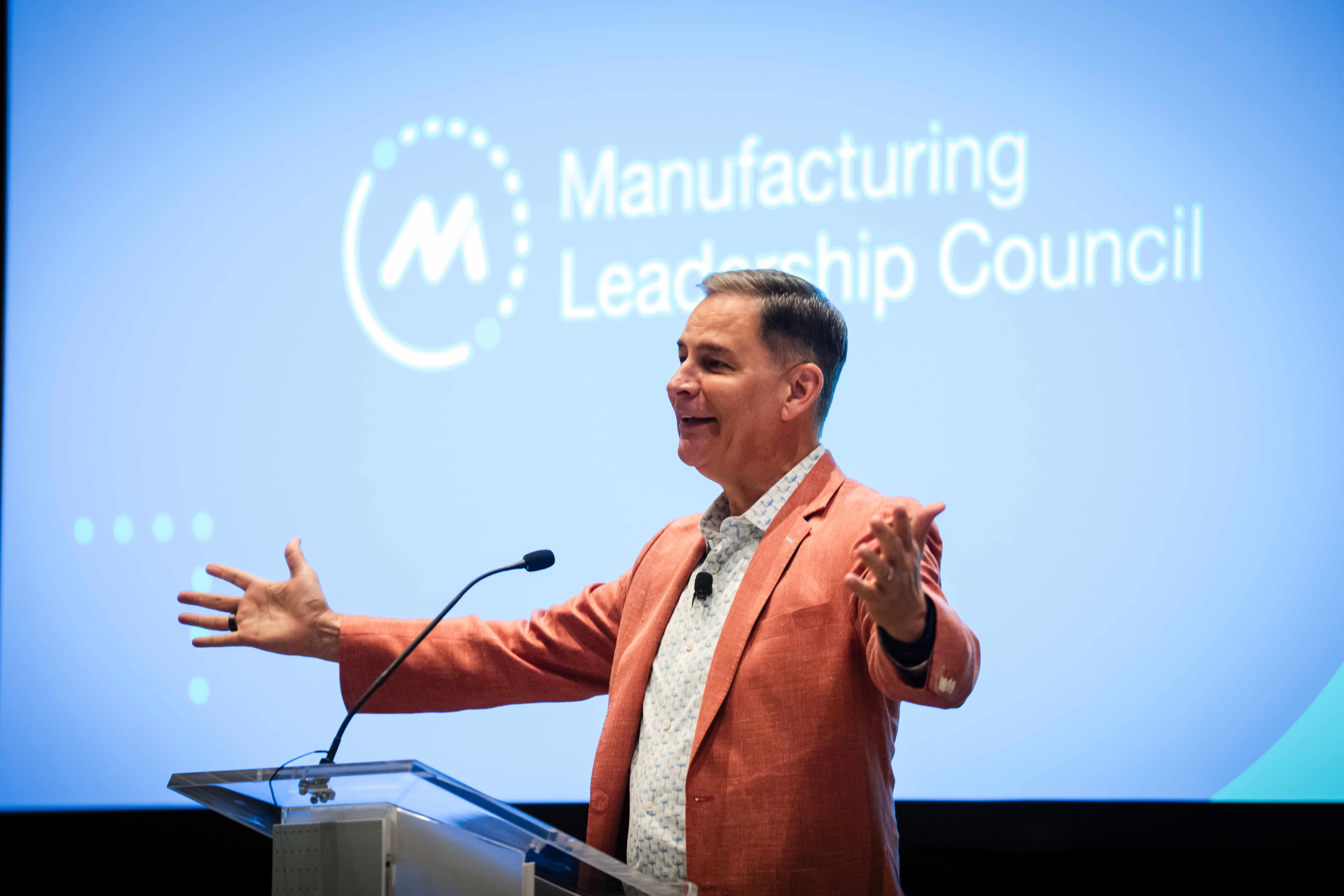


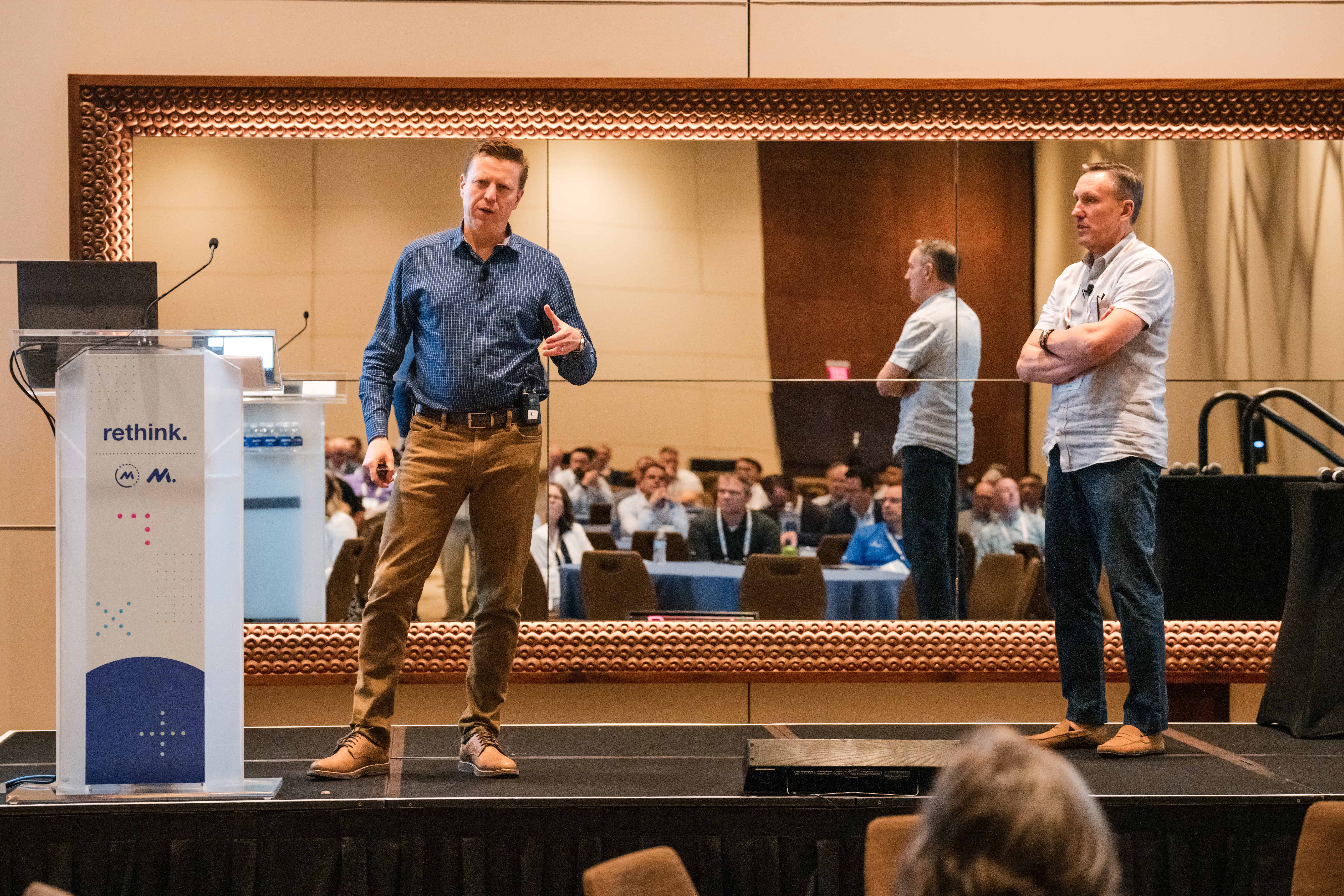

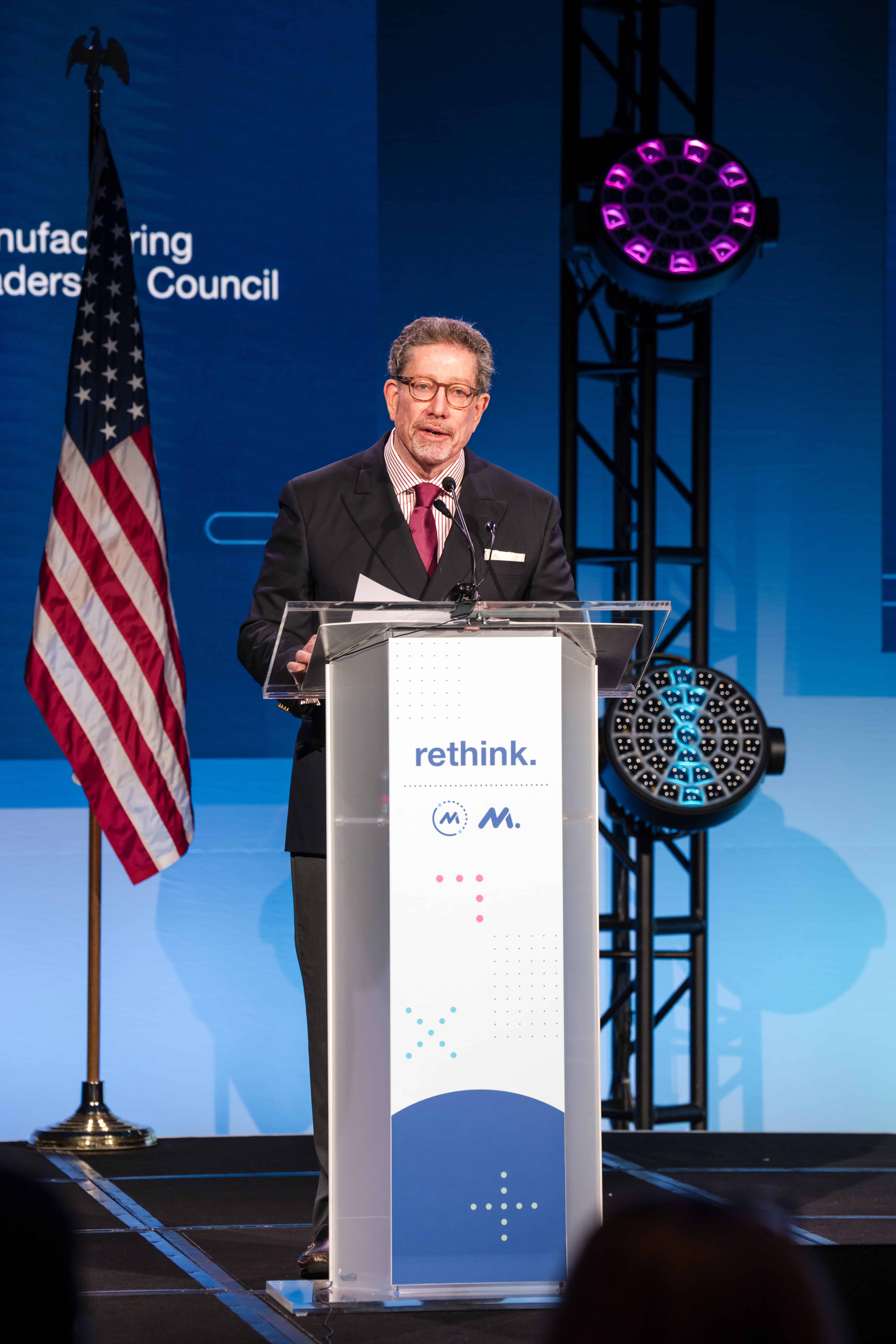
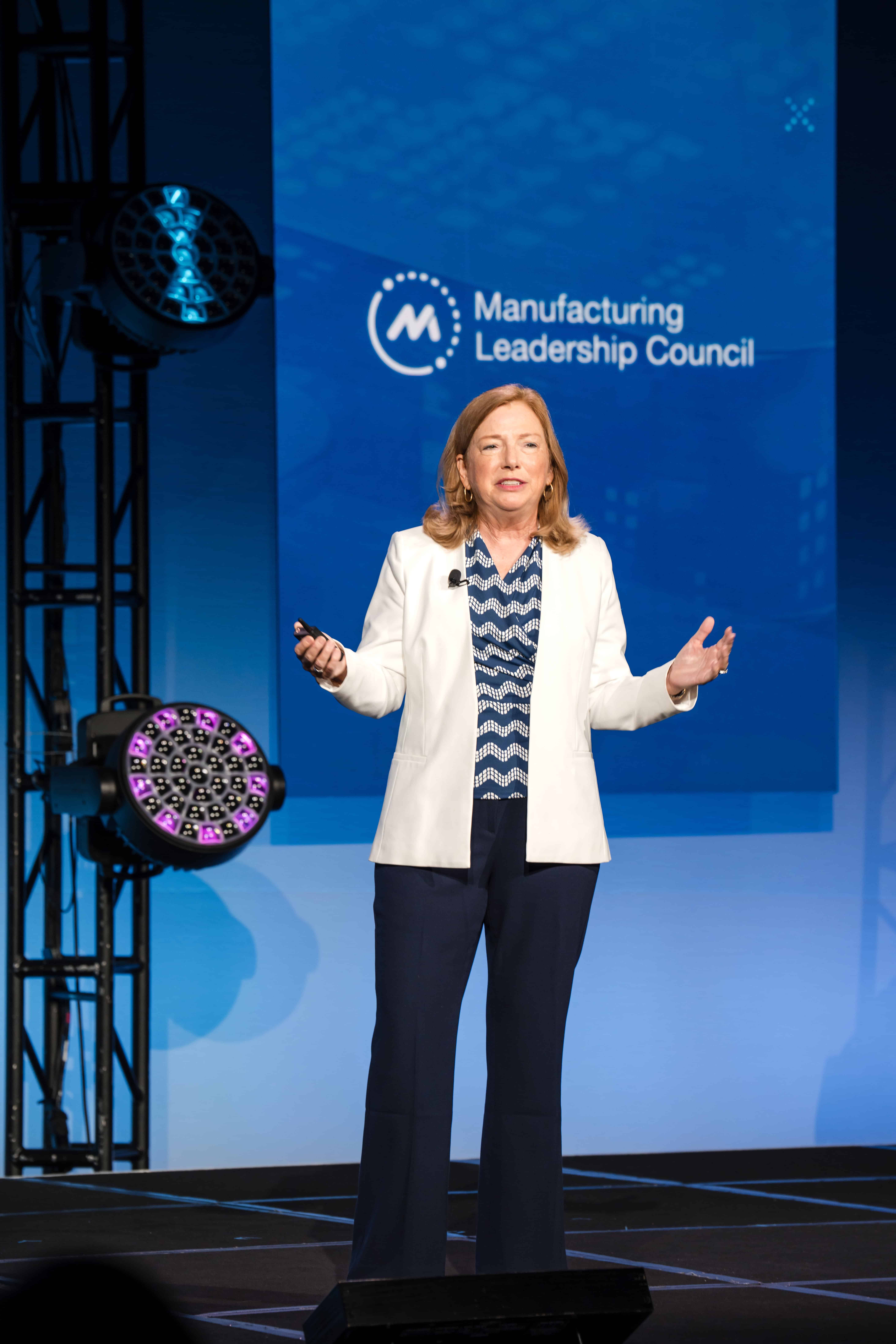
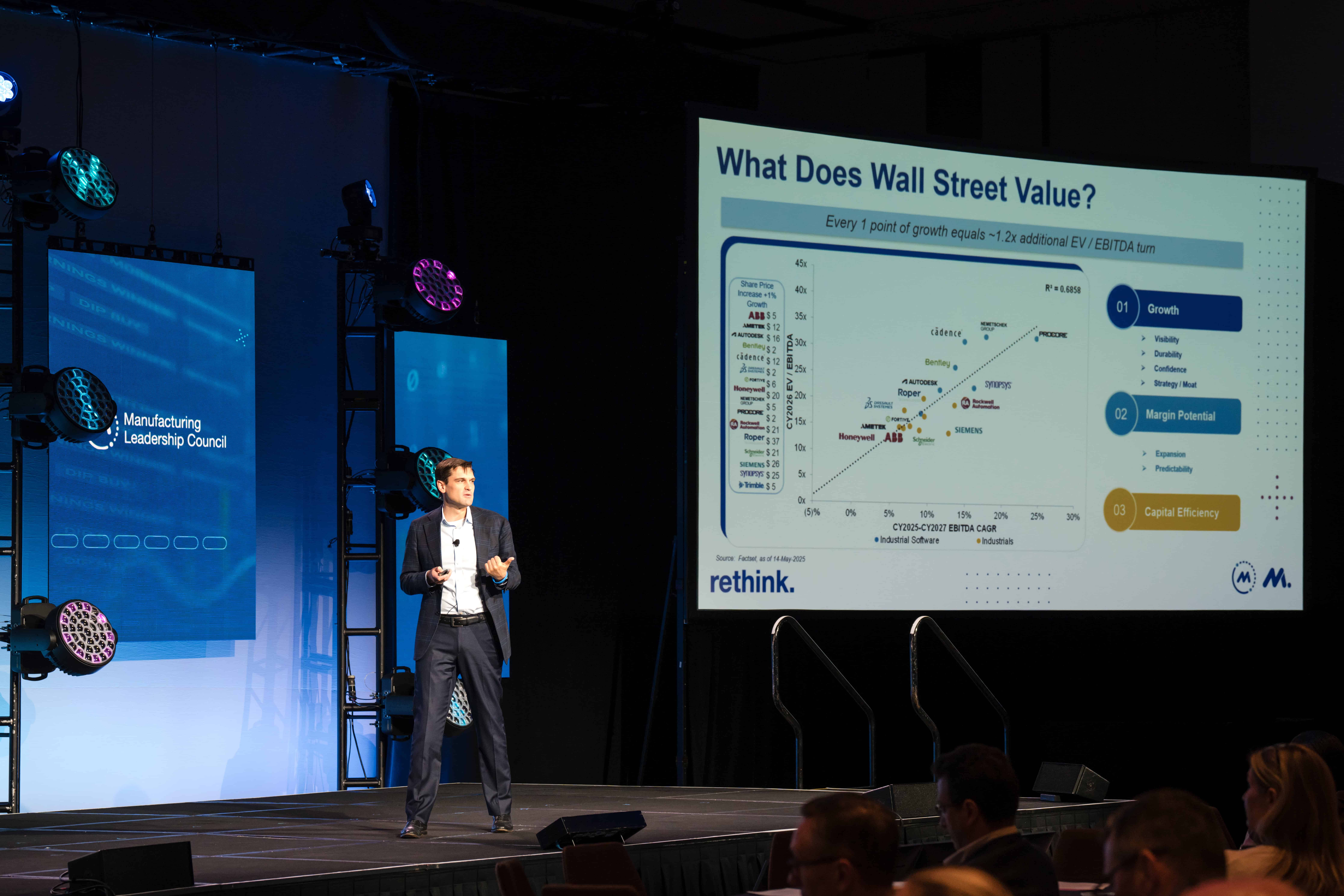
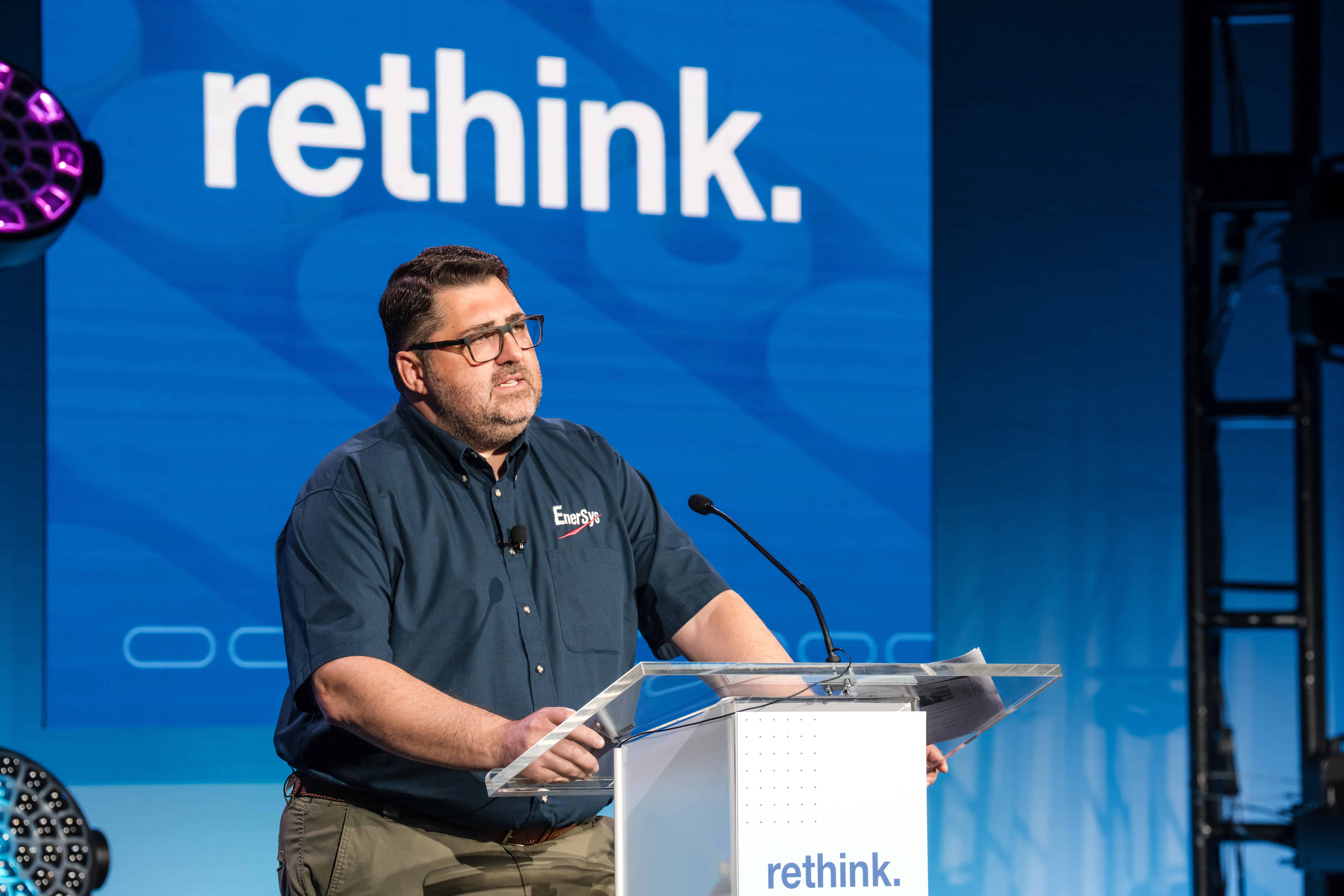
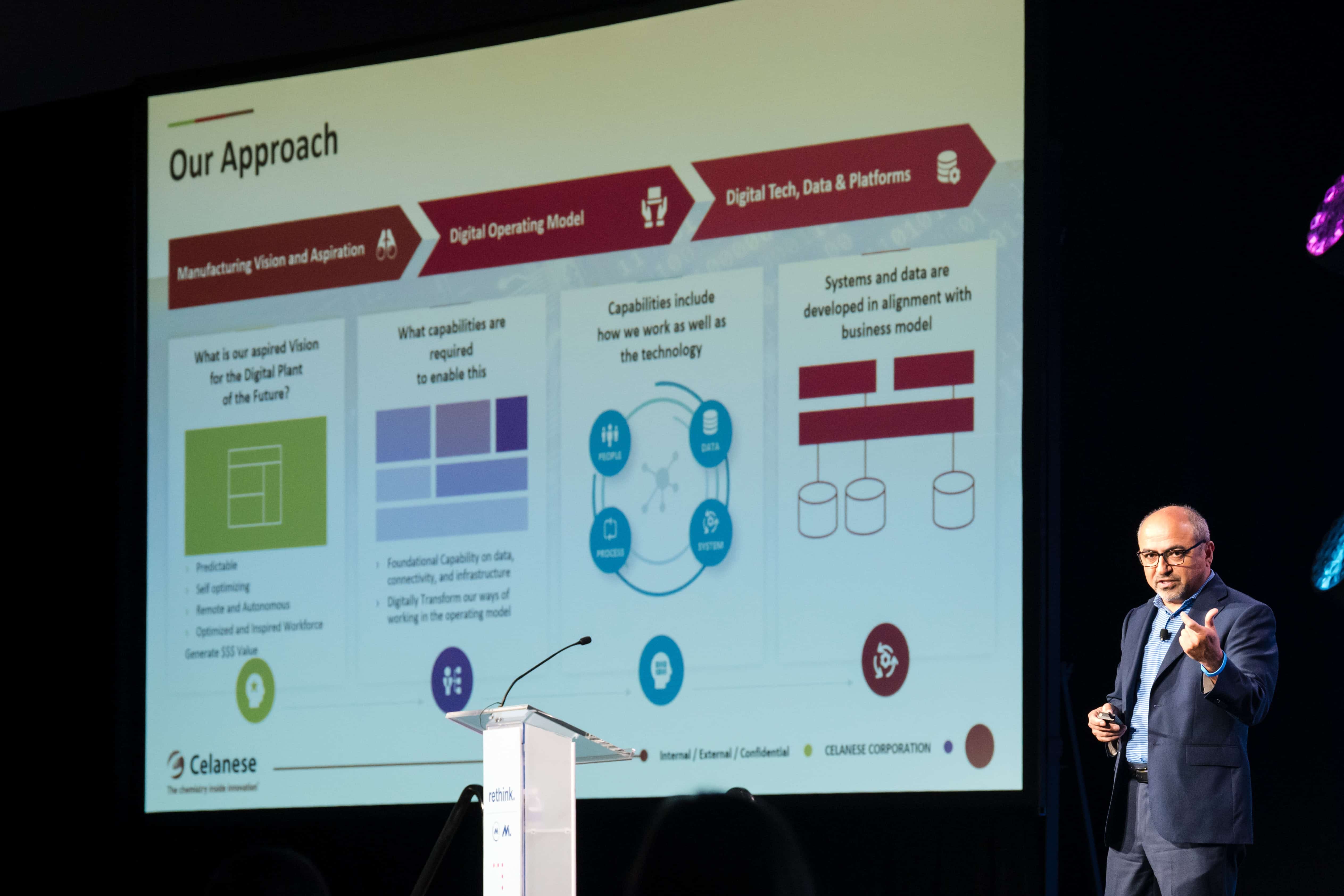
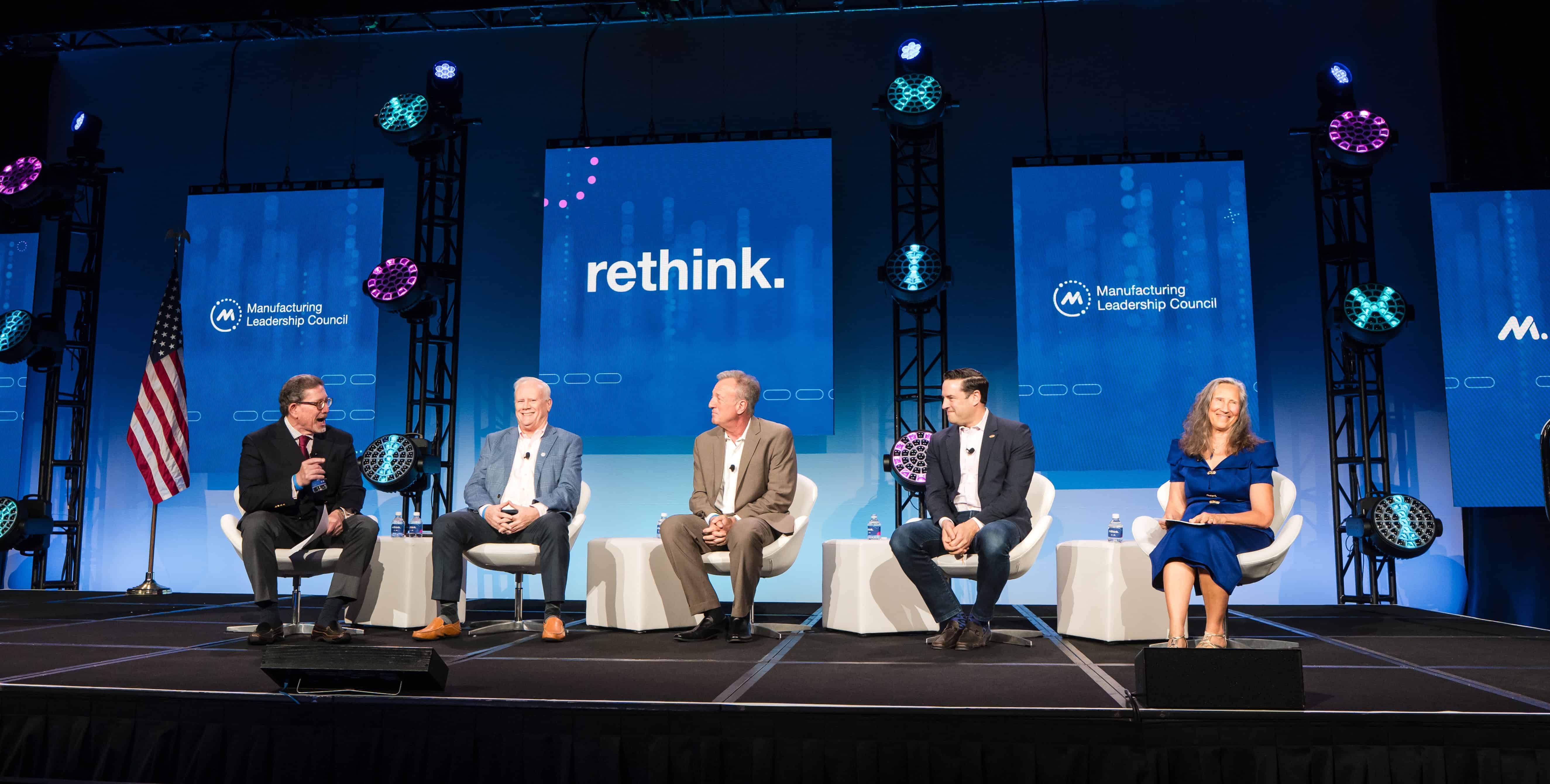

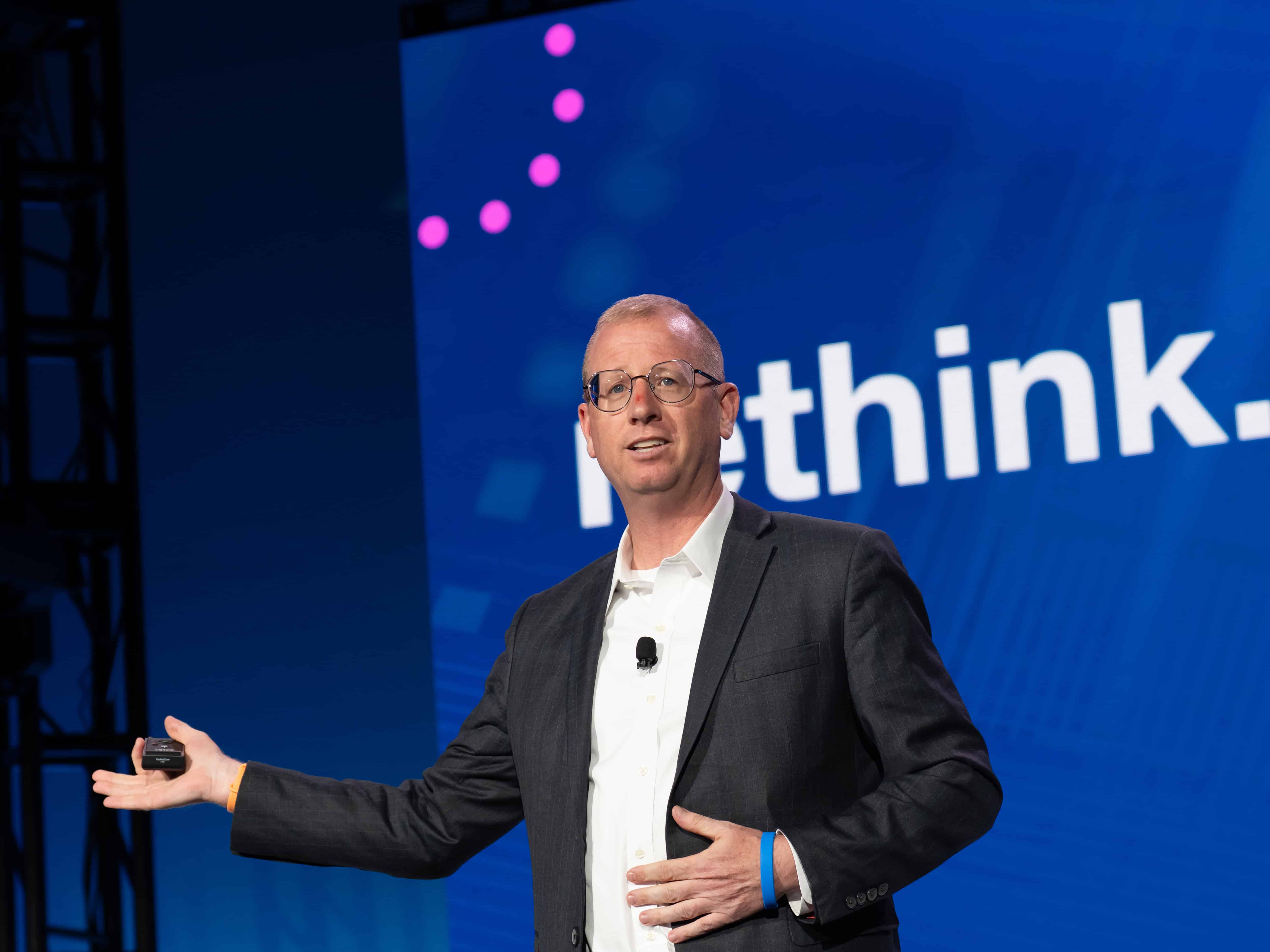
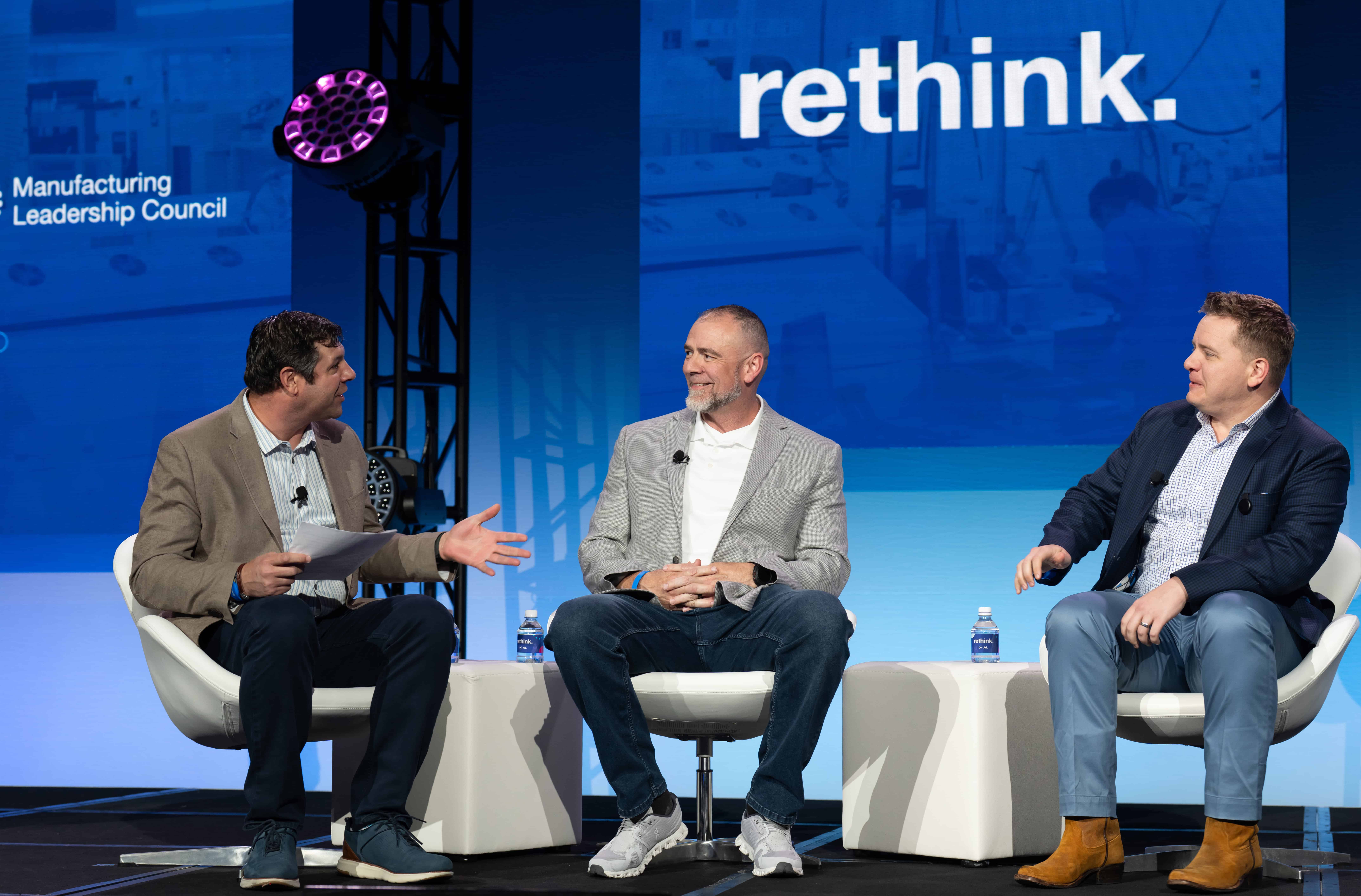
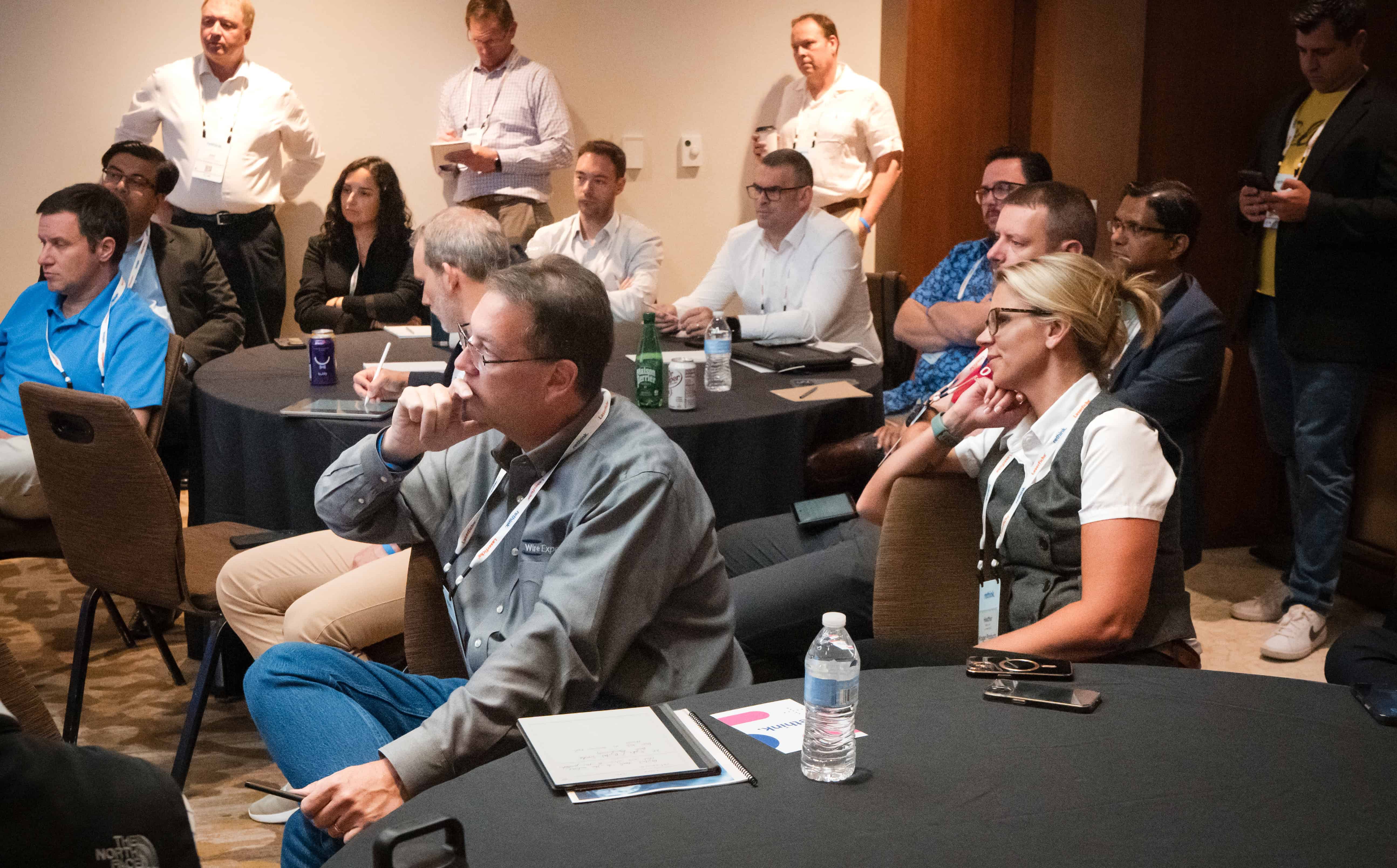
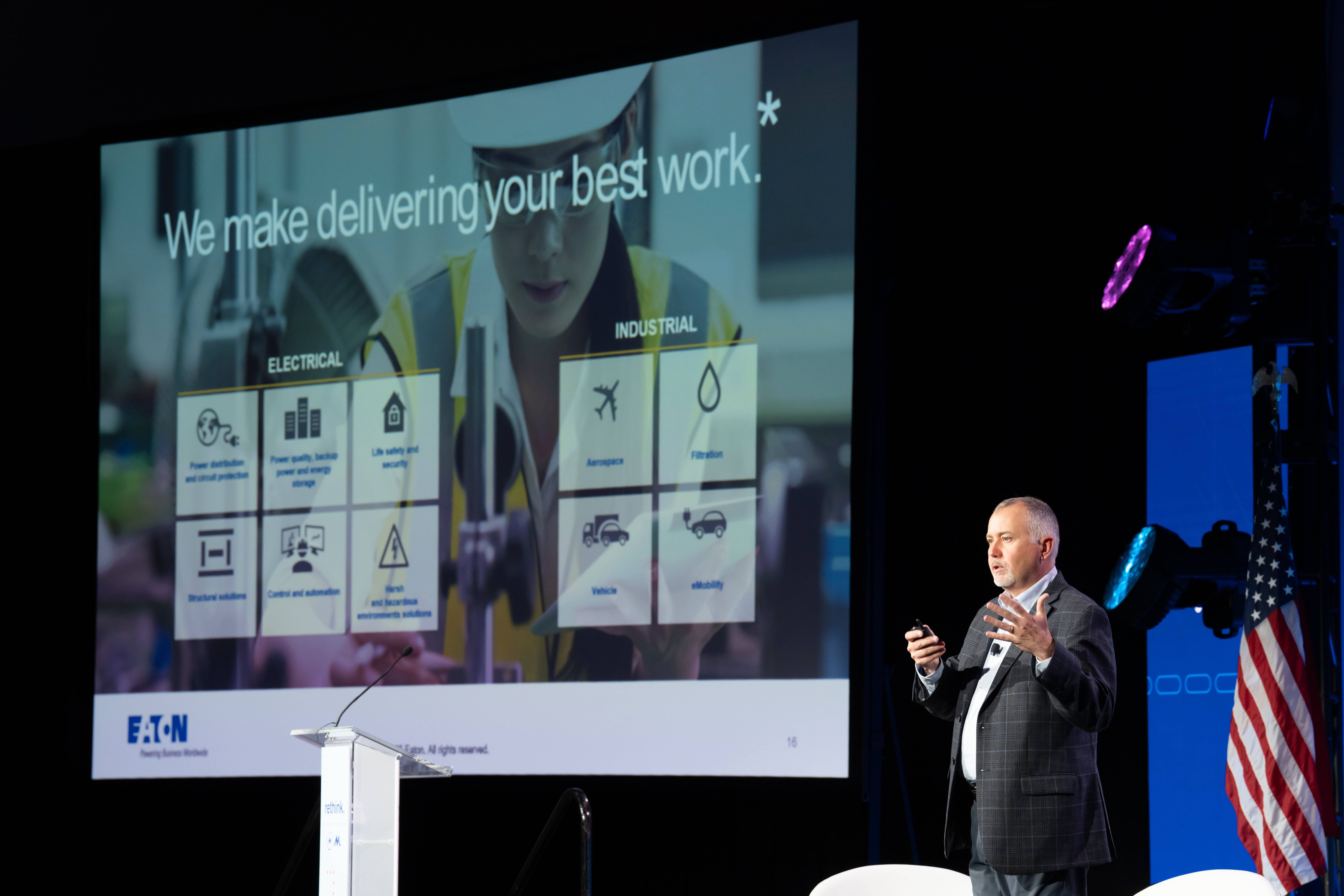
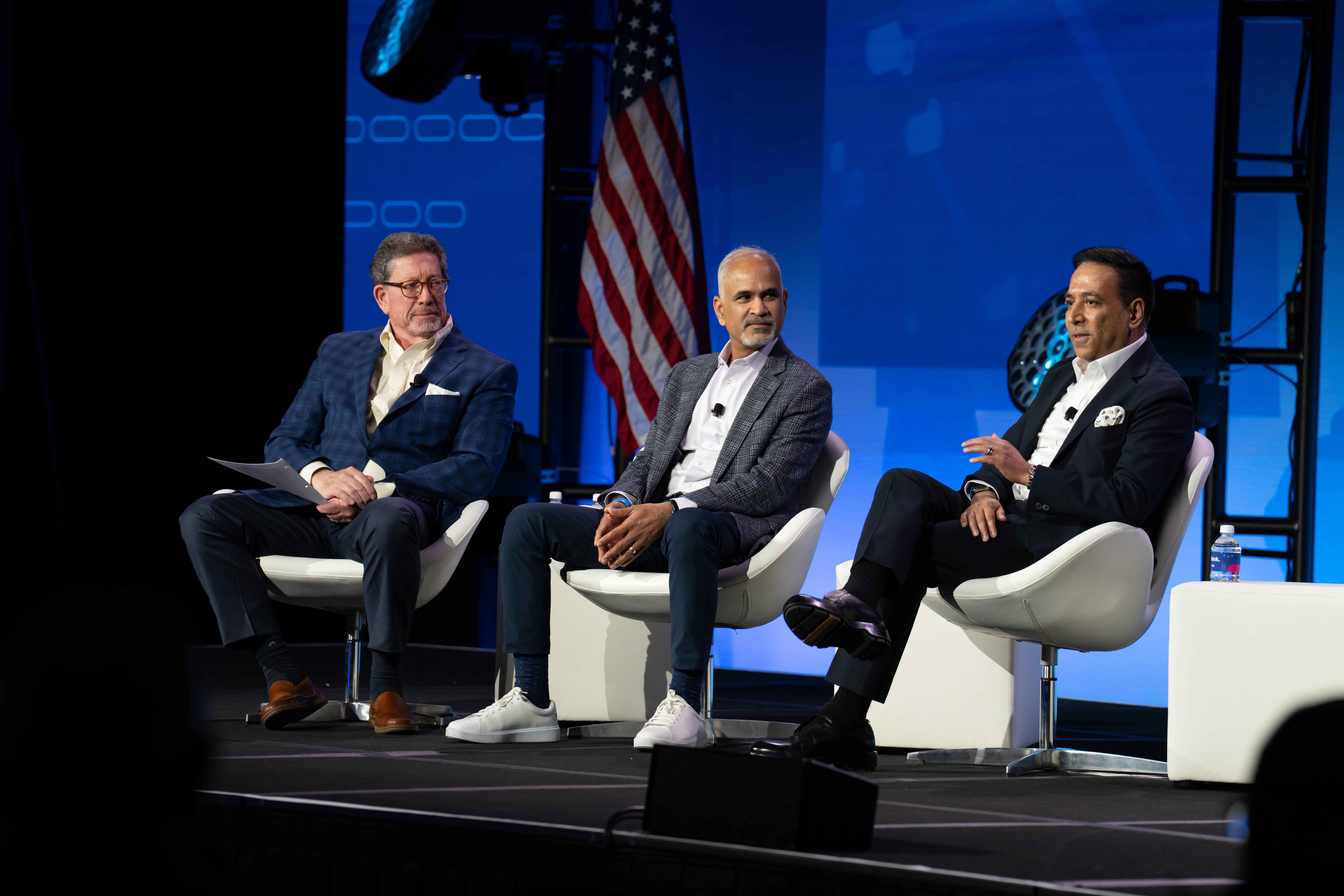
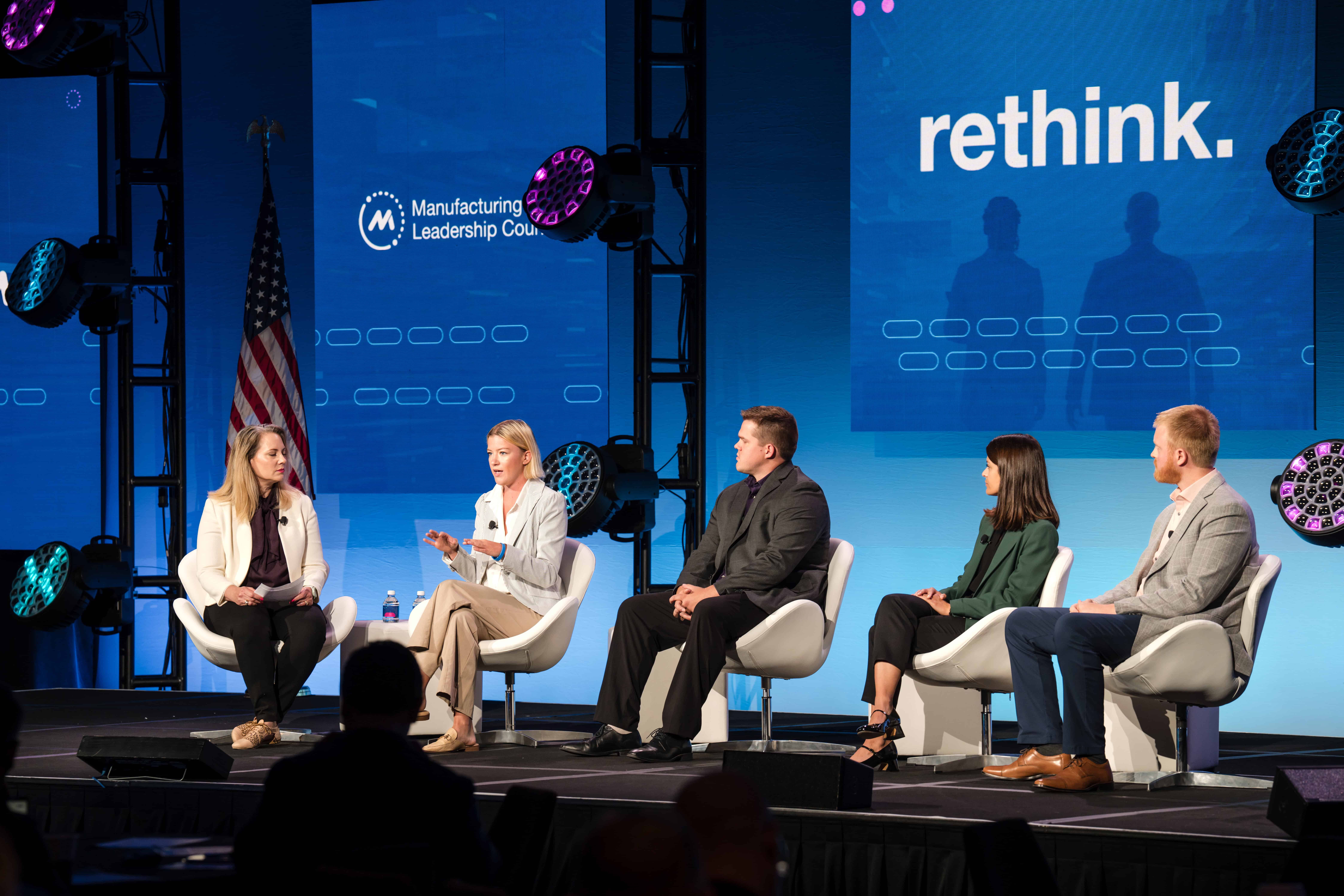
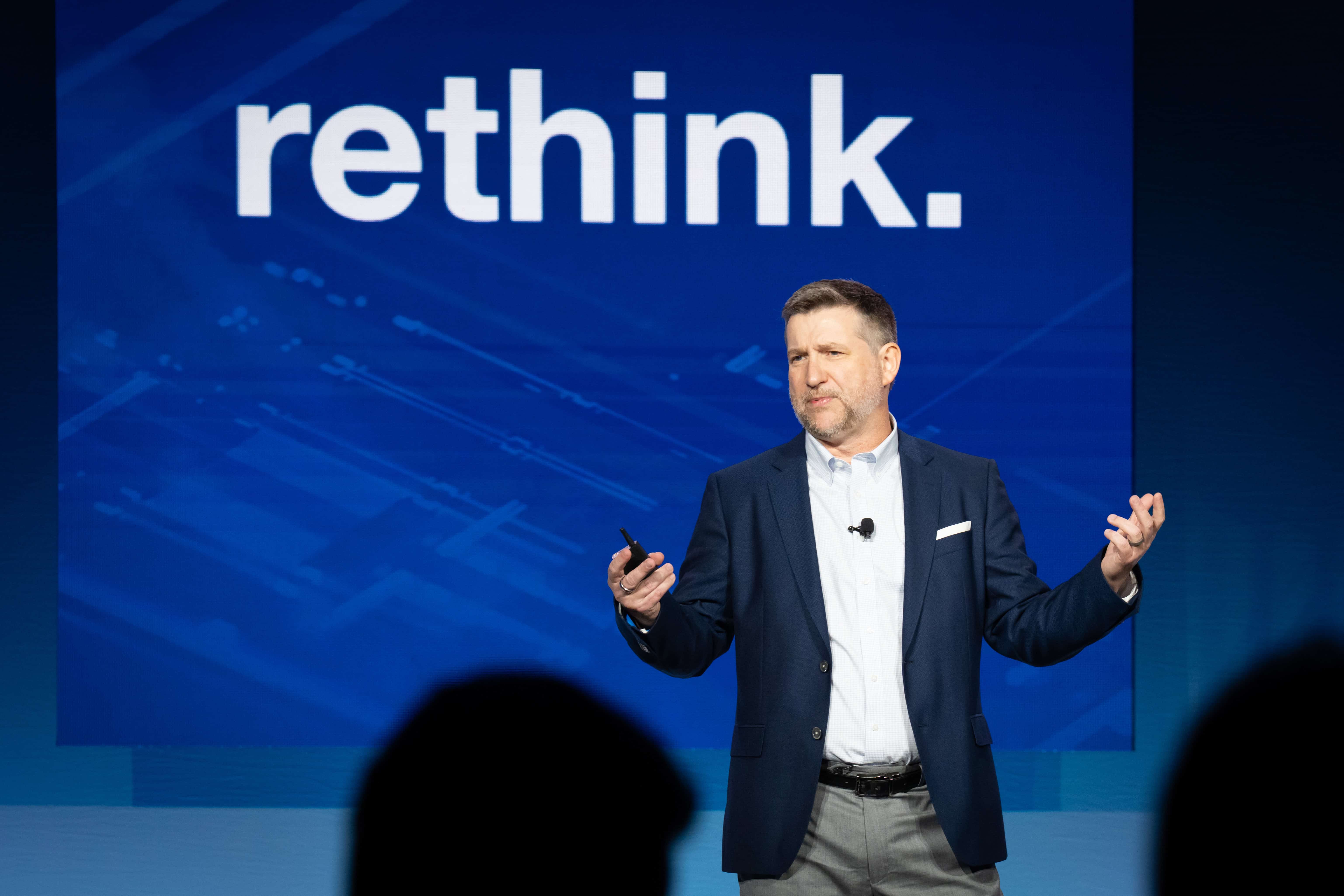
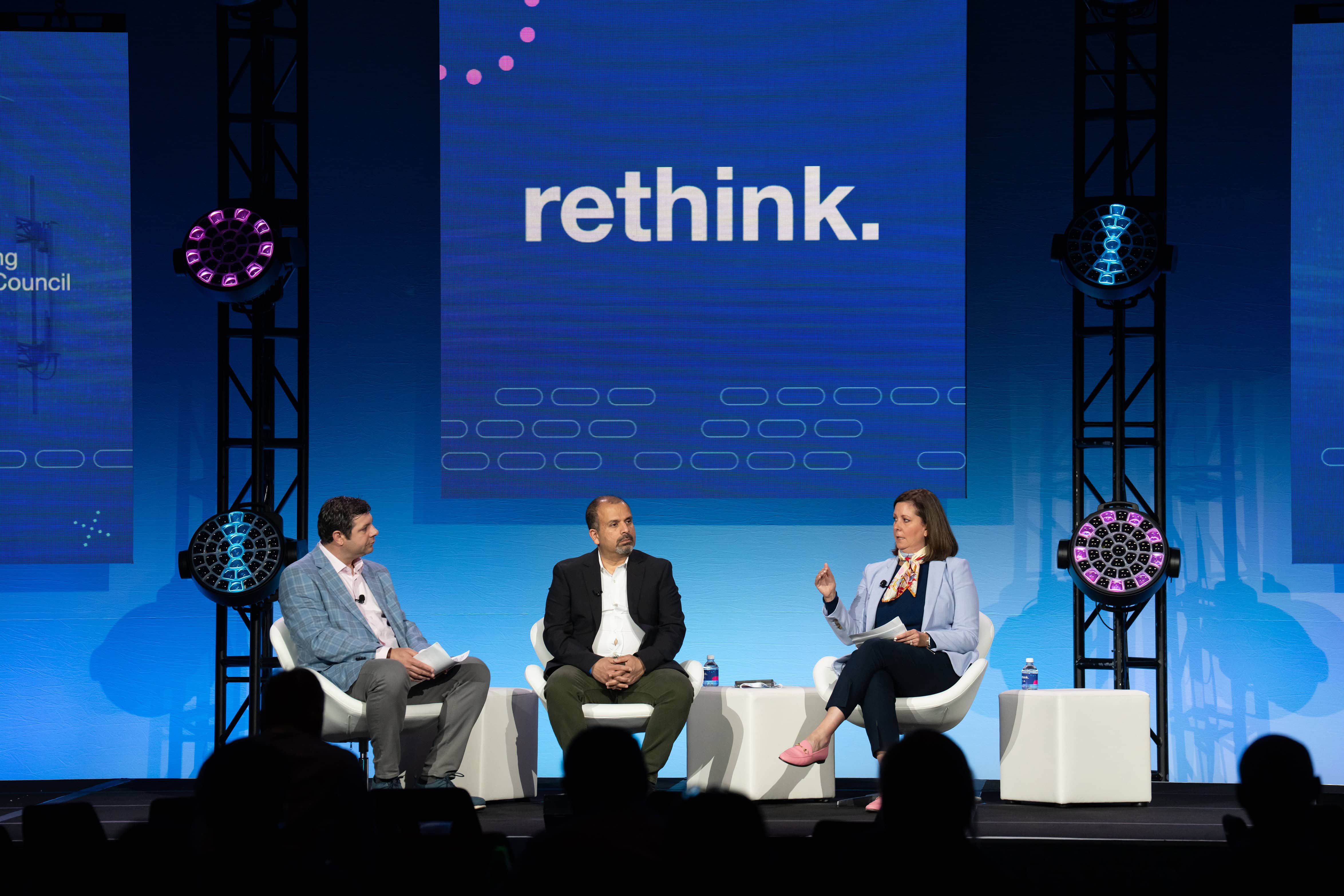
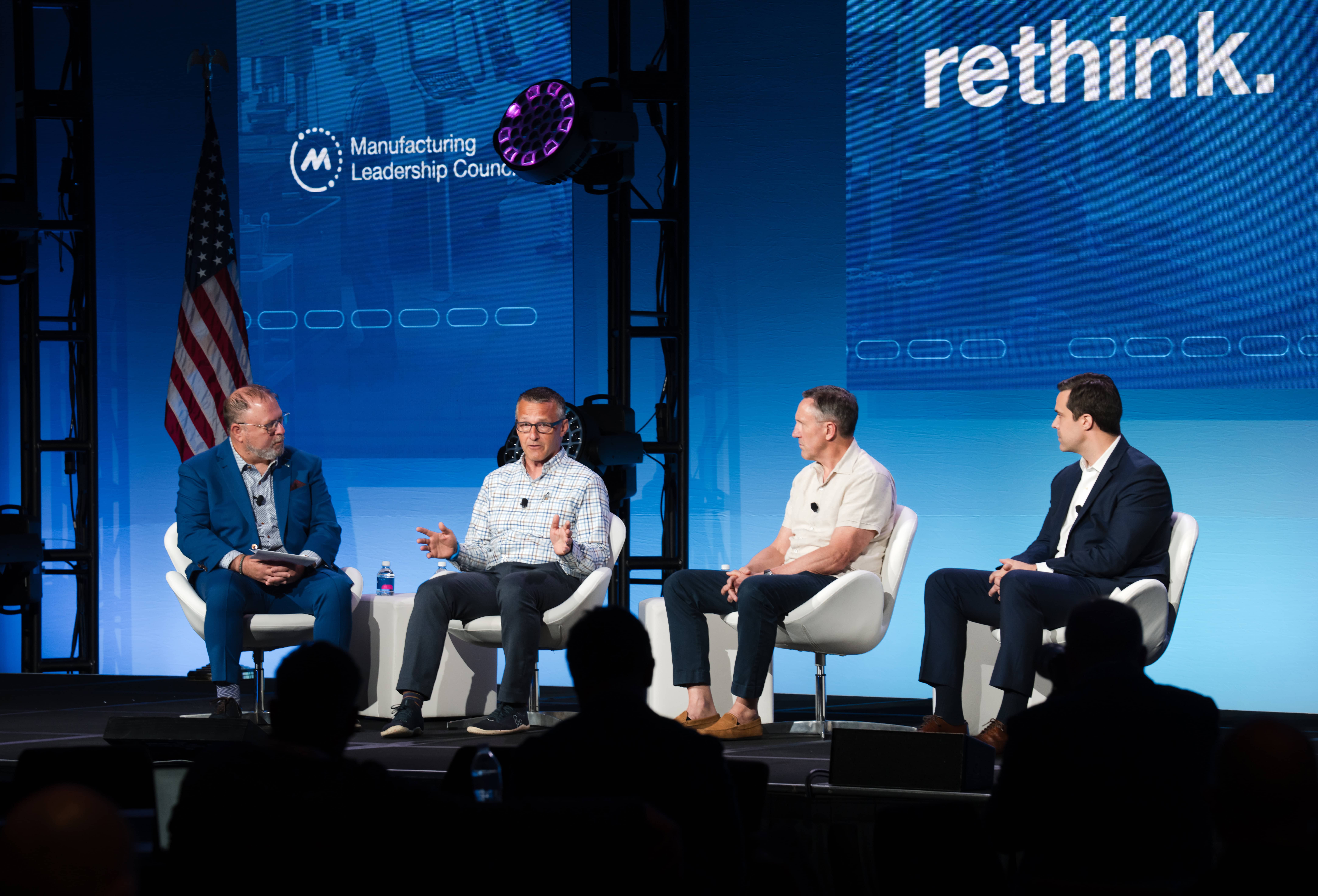





About the author:

David R. Brousell is the Founder, Vice President and Executive Director, Manufacturing Leadership Council
Dialogue: At Merck, It Takes a Digital Village
From shared purpose to tech-powered teams, MLC’s 2025 Manufacturing Leader of the Year, Merck’s Besu Alemayehu, explains what it takes to drive digital transformation.
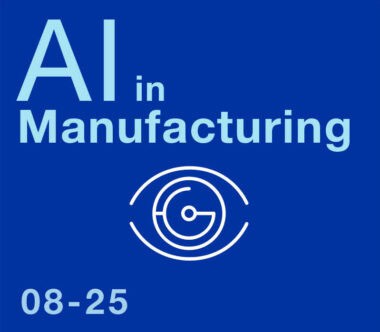
JEFF PUMA: Hello and welcome to the Manufacturing Leadership Journal Executive Dialogue for August 2025. I’m Jeff Puma, content director for the Manufacturing Leadership Council. I’m excited to welcome Besu Alemayehu as our guest today.
In addition to his role as the senior vice president for digital manufacturing and supply at Merck, Besu was recently recognized at the 2025 Manufacturing Leadership Awards in the Digital Transformation Leadership category. And what’s more, he was named the 2025 Manufacturing Leader of the Year, which is the top individual honor handed out by the Manufacturing Leadership Council.
Besu, congratulations and thanks for joining me.
BESU ALEMAYEHU: Thank you. Thank you for having me.
JP: I want to start by taking us back a few weeks to the Manufacturing Leadership Awards Gala.
You didn’t know you were going to win, but I did. And from where I was sitting on sort of the side of the stage in the front, I could see you, and as I was watching NAM CEO Jay Timmons, he was describing the recipient of the award. He was sharing some really nice things that that person’s colleagues had said about him, but he hadn’t said your name yet. When he mentioned that the winner was born in Ethiopia it became obvious that he was talking about you, and I could see a big smile on your face. I could see the people around you start congratulating you. Can you take us back to that moment? What was it like to hear your name read along with all those other accolades that were mentioned in the lead up to the announcement?
BA: Thank you. It was surreal. A lot of things overwhelmed my mind for a few seconds. It took me a few seconds to realize the gravity of the recognition both personally and professionally. So a lot of things went into my mind.
The first thing which came to my mind was my mother, obviously. I was just talking to my son. I only have one son. I was excited about the digital transformation recognition, so I was sharing with family when I heard the Ethiopian introduction, and that’s when reality set in.
But it’s a very humbling moment. As I always say, “it takes a village.” It really did in the Merck case and it’s a team’s effort. It’s very humbling to represent the team and accept this award and recognition on their behalf.
But from humble beginnings in Ethiopia to being in a role which is impactful in saving lives and improving lives is one of rare opportunities in life. You need to recognize and acknowledge and accept the gravity of the work we’re doing in the life sciences industry.
So it was surreal, overwhelming.
JP: That’s great. And you mentioned in your speech, and just right now in your answer that “it takes a village,” and I want to talk about the team that you lead. It’s a fairly new team. It came into existence about two years ago if I understand correctly. How did this team get started? And how did you decide where to focus first when looking to create value?
BA: When I first joined Merck, and when the task was given to me, I spent the initial few weeks and months really listening. Coming into a very established organization and understanding the problem statement and realizing what it takes to get us from where we are to the destination was quite a task. So I spent some time, and it was obvious to me that there are certain things which needed to come together.
One is the clarity of strategy. Two was the partnership across the ecosystem. And three was the right sized team with the right skillsets in place was a must.
Once we have clarity of a strategy and clarity of that roadmap—the lighthouse, was what we said—then we need to bring in a diverse team. It’s not only technology. It needs to be a diverse team in skillsets. So we decided to combine it, but more importantly, one-third of that team should come from the outside with both technical and business expertise.
So that’s really what set us up for success. And this is really their success. What they were able to drive because of that diversity in thought, diversity in skills, diversity in backgrounds, and diversity in the way they came up through the ladders in their own journey really contributed to the success of this program. That was the defining moment for our success, to be quite frank.

The technology can be a fit for purpose. But really winning hearts and minds and aligning them behind one objective, one goal, one hill to conquer was the monumental task of this job.
JP: You mentioned that it is about people and not just technology. How did you get these individuals with this diverse background and these diverse thoughts, how did you get them to adopt a digital-first mindset?
BA: It was not easy. Technology is not a challenge once you get to know what you really need to do. The capabilities are out there. The technology can be a fit for purpose.
But really winning hearts and minds and aligning them behind one objective, one goal, one hill to conquer was the monumental task of this job.
So what did we do? First define that end goal. What that north star should look like.
And then define the paths and along the way bring both the technology experts, the business process experts, the science experts together—not only to deliver it, but to define the problem statement together, define the solution, design the solution together, deliver the solution together, and then eventually, run that that business with that capability—combined capability. Technology as not an enabler, but as part of the operation and part of the day-to-day.
So really aligning them behind that common goal, common objective and common hill to conquer, as I always say, is what really drove us to success, and what helped us achieve what we set out to do.
It was really that clarity of purpose and our job—our industry—luckily has clarity of purpose. Everyone in that team has someone who can benefit from the work we’re doing: distant relative, close relative, family member, friends. It was a purpose-driven initiative and aligning them behind that common objective was the defining moment for us.
And we still do that. We identified about 14 areas of opportunity for transformational opportunities, and the opportunity leaders always come from the subject matter expertise. And then they come under the one umbrella as one team, delivering one objective, with one team mindset and one objective. So really, the people in the team.
JP: What advice would you give to other manufacturing leaders as they try to align strategy with technology?
BA: I think the first thing is don’t think of those two as two separate and distinctly independent components of the business. They are one in the same in today’s day and age. I always joke about with my colleagues, my friends at work and the executives. I always say, “If you really want to test the importance of technology, I dare you to close it for a month and see if the business can run and if you can deliver on your objectives.”
I think that mindset that technology is no longer a support function, no longer a nice to have. It’s a must have. Starting with that mindset, is the first step towards that objective of taking it as a core component of your transformation and enablement.
Two, if you want to go further, bring the village together. If you want to be tactical, you can deliver a tactical solution. But in today’s day and age, there is no one component, one vertical which can deliver an end-to-end business transformation or business value.
So what do you do?
You bring that entire village together and then make them part of the solution and part of every step of the way as we go through this delivery and exercise. It’s really an important component to instill in the organization psyche and the organization’s culture.
And having a seat at the table. One of the things we did was the digital partners of the business areas, they are core members of their respective leadership teams. There’s no longer, “throw it over the fence.”
They are a core part of the strategy, core part of the execution, core part of the continuous improvement.
It’s really important to integrate all of those as one versus multiple parallels.

You bring that entire village together and then make them part of the solution and part of every step of the way as we go through this delivery and exercise.
JP: Let’s dive a little bit more into that. One of the most frequent topics and hurdles that we always hear about at the MLC is collaborating across functions and removing silos. How have you been able to foster collaboration that’s effective and leads to those positive outcomes?
BA: Well the first thing is knowing your audience, knowing the business problems and the problem statements. But more importantly, knowing your business as equal, if not more than your partners in the business, so that you can articulate the values based on outcomes—not on projects, not on cost but outcomes.
And once you start to show what good could look like in this focused outcomes-driven space, it becomes easier.
But usually change is hard especially for a successful company in our industries, multiple industries. If you have been successful for 100 years, why would you change today? So articulating that call for change, call for transformation is really, really important.
Second is really building that support. In our case—from the board to the CEO, down to the divisional leaders, to the CIDO, including his leadership team—we are all aligned and mandated to drive that change. To use [Merck CEO] Rob Davis’s terms: business is good, we’re doing really well, but everything has to change, because what got us here is not going to get us to the next few decades.
And the pipeline is the most promising pipeline with real impact to people, society and mankind at large. So really aligning and instilling that and showing that support spine up and down the food chain is really important, because it sends the message, it sends the tone, and it brings people and encourages people to speak up. And they are closest to the operations, so we do that.
And then, last but not least, is encouraging that speaking truth to power culture, that opened up culture, right? Look at what are the problem statements? What are the problem areas? What do you see as a pitfall for this initiative? Because they are the closest to the heart of it. And providing and creating that safe space where people can come and speak up, come and throw their ideas and challenge us on a continuous state, in a most constructive way. We’ll always open the doors.
You’ll be amazed, for this transformation—which has billions attached to it—we haven’t used any of the big name consulting firms. We really crowdsourced these opportunities, and we picked the 14 of them based on impact. And each and every one of them is returning value to the organization. So when you really unleash that power, when you bring that village together again and empower them. Create that safe space. Encourage a dialogue and healthy tension in the wire to encourage thinking outside of the box—there is no replacement for that in my mind.
JP: You’ve unleashed the power. Looking back at it as you think about the digital transformation to date, what surprised you most, either good or bad? And how did you adapt or change things in order to take advantage of the good things and overcome the bad?
BA: What surprised me the most, positively, was the packed power of Merck’s talent. The people in the organization. How much they know. How much dedication there is in the system, and the belief in the mission of Merck and the work they do. That was really powerful for me.

We think we know it all when we are in the industry for 30 years, but this [next] generation went to school with no textbooks. Their way of thinking about digital and technology and enablement is incredible.
And what surprised me the most is again, the people, the strong resistance for change. But once you really understand the strengths and the opportunity, and you manage to create that bond between the two—the strength and the opportunity—and show that, as I always say, in simple kindergarten ways, so that anyone can digest it because it’s a multifaceted transformation. What it means to supply chain to quality, to the engineering is very different. So developing that skill and that simplicity in the system to show in such a simple and understandable way was a big challenge. Once we were able to close that gap between the two, it was an easier journey to the end.
And the third one—which really surprised me—was once people understood, all of that resistance turned into a demand. A demand we’re not able to satisfy. We created a monster in a way, in the system. The hunger for more data, interconnectivity, insights to run our business that I didn’t expect. We’re working so hard to penetrate through that resistance, and once we passed that what we didn’t anticipate was how fast we needed to go. That was a big miss on our part, but not in a bad way, in a good way.
JP: I have two more questions, and I want to shift to thinking about the future for these questions. So how should current leaders go about cultivating and nurturing the next generation of future leaders?
BA: I think it’s amazing, this new generation of leaders, engineers, manufacturing experts. How they think is very different. How they are wired is very different. How they are formed and educated is very different. The insights they bring into an established organization—manufacturing is an industry with a very long history—as they come into that fold, I think we need to receive them with an open mind and be open to listen. Because what they see is amazing, and how simply they think and how quickly they can bring an impact to the organization is really important. For me, encouraging them to speak up and encouraging the innovative tools and creating that mechanism that can hit the system so that we can benefit from these great ideas, innovative thinking, and outside the box thinking is really important. So encouraging coaching and mentoring is really important.
But, more importantly, I tell my colleagues, “Be humble.” We think we know it all when we are in the industry for 30 years, but this generation went to school with no textbooks. Their way of thinking about digital and technology and enablement is incredible. Quite a few of my young employees don’t even have checkbooks anymore. They are natively digital and bringing them to our industry and forcing them to go back to paper when they don’t even know how to legibly write certain things, is not very constructive. So be open, be humble, encourage that new way of thinking, new way of looking at things, because the future is very different than what has been for the last 30 or 40 years. The future is digital. The future is native digital, integrated digital.
And with AI coming to the mix, now insights and decision making on the fly is going to be a basic requirement of any good business in the future—any good manufacturing in our case.
So being open, being humble and continuously coaching and mentoring this new generation of leaders and engineers to continue to think innovatively and challenge the status quo and dare to speak up is really what should set us apart in the future.
JP: So, speaking of the future, what about the digital manufacturing future really makes you excited? Maybe not just at Merck, but across all of industry.
BA: At the MLC [Rethink], I was fascinated by some of the use case presented. How the industry is thinking outside of the box. How the industry is innovating with these new capabilities coming up.

When I think about the future of manufacturing, all I think about is that fully automated, fully integrated, fully digitally enabled, and data savvy industries are what I see across the board.
When I think about the future of manufacturing, all I think about is that fully automated, fully integrated, fully digitally enabled, and data savvy industries are what I see across the board. From the way we design our molecules in our case, or the cars, or the planes, or the robotics, to how we deliver, how we draw insights from every data, and how we predictably intervene and continuously improve our designs by getting that feedback loop mechanism into our system.
I think the future is digital and manufacturing could benefit a great deal, because if you look at the cost of any production, manufacturing and supply are a big component.
And if you look at the opportunities today in our space. They revolve around those 2-3 areas, between logistics and post-market data and continuous improvement of your product specifications or molecule improvements. It’s all digital, it’s all in the manufacturing space, and I’m super excited, not only for me and my generation, but for the coming generations because they are bound to do great things because it’s an opportunity-rich space. And within that space there are a lot of great innovations to be done. And I can see it. It’s coming. It’s coming and it’s coming fast and furious. So, we need to get ready for it.
JP: Excellent. Well, thank you for your answers and congrats, again, on being named the 2025 Manufacturing Leader of the Year.
We’re excited to hopefully continue our conversations with you, and perhaps bring you back for Rethink in 2026 if you’re available. You have a wealth of information to share some incredible examples. And a great mindset of how to deal with your teams and with digital transformation, and bring it all together with people and technology and organizational change. Thank you so much for being here and sharing these insights.
BA: No, thank you, thank you. I look forward to the next Rethink. Thank you very much. M
Portions of this interview have been edited for clarity and length.
About the Interviewer:

Jeff Puma is content director for the NAM’s Manufacturing Leadership Council
Defining the Human-Machine Relationship

In his Rethink speech in June, MLC’s founder said manufacturers should take a proactive approach to decide what increasingly intelligent, AI-powered machines should and shouldn’t do.

TAKEAWAYS:
● AI-powered machines are now outperforming humans in seven important technical benchmarks..
● A new human-machine “hybrid model” is emerging that will equate synthetic intelligence with biological intelligence.
● Manufacturers should appoint an executive to study and define the human-machine relationship in their organizations.
In 1950, the great British mathematician Alan Turing authored a paper called “Computing Machinery and Intelligence” in the academic journal Mind, published by Oxford University Press. In the first sentence of that paper he asked a question that has been the subject of passionate discussion and debate, intense research, and endless fascination for 75 years:
Can machines think?
In something of an answer to his own question Turing said: “We may hope that machines will eventually compete with men in all purely intellectual fields.”
Today, as a result of advances in artificial intelligence, computing, communications networks, and the availability of ever-larger data sets with which machines can process information, Turing’s question has been superseded by many other questions, some existential, that we must ask in the Age of AI.
To what extent should we allow intelligent machines to act? What types of decisions should they be empowered to make? Should they be trusted? Can they be co-equal partners with human beings? How shall we define the status of AI-powered intelligence machines in relation to human beings?
How the human-machine relationship is defined will profoundly influence business, government, and society.
The answers to these and other related questions will not only have implications for manufacturing, but will also profoundly influence politics and government policy, military strategy, the nature and future of work, and many dimensions of everyday life.
As Henry Kissinger, Craig Mundie and Eric Schmidt say in their 2024 book “Genesis: Artificial Intelligence, Hope and the Human Spirit”: “New forms of AI and human responses to them could transform nothing less than the human relationship to reality and to truth, the exploration of knowledge as well as the physical evolution of humanity, the conduct of diplomacy, and the international system. These are among the crucial issues of the coming decades, and they ought to be the guiding concerns of leaders in every arena.”
And so today I pose to you a key question of our time: What does it mean to be human in the Age of AI?
The Relationship is Dramatically Changing
No doubt prior generations had to understand their relationships to tools and machines as the devices evolved over the centuries. But much of this had to do with physical relationships – with a hammer, a saw, an axe, a loom, a steam engine, an electrically-powered moving assembly line, a press, an injection molding machine, etc.
Being human was always more defined by attributes such as creativity, critical thinking, contextual awareness, judgement, curiosity, and, of course, having a soul and a connection to the divine.
Some researchers have delineated the evolution of the human-machine relationship across what is called the 5C model – co-existence, cooperation, collaboration, and, in the future, compassion, and co-evolution.
In our own time, the human-machine relationship has been traditionally designed as a master-servant relationship, where the human directly controls what the machine will do and when it will do it through an interface.
Machines will reach a level of intelligence that enables them to execute tasks and make decisions autonomously.
But AI is changing this design, and in dramatic ways. In coming years, our notions of intelligence will be reshaped by what EY Global Vice Chair Hanne Jesca Bax calls “the next generation of disruptive technologies” – AI, and in particular, GenAI; quantum computing, which will increase the speed and scale of AI by orders of magnitude; the metaverse, by providing different human-machine interfaces; and brain-machine interfaces themselves, which will connect our biological and silicon brains.
In short, we are in the midst of moving from a time of automation, where the human still directs the machine, to where machines will reach a level of intelligence that enables the machine to execute tasks autonomously, without pre-defined instructions.
As a paper published last year by researchers from the University of Bonn and Aachen University in Germany said: “The previously accepted understanding that autonomy is only applicable to humans has been invalidated.”
AI is Already Outperforming Humans
So, what is the tale of the tape, so to speak, between humans and machines?
In its 2025 AI Index Report, Stanford University’s Human-Centered Artificial Intelligence unit said that AI-powered systems have now out-performed humans on seven of eight technical performance benchmarks. These benchmarks include: image classification; medium-level reading comprehension; multi-task language understanding; PhD-level science questions; visual reasoning; English language understanding; and competition-level mathematics. Only in multi-modal understanding and reasoning did humans do better than AI.
But Stanford said that the velocity of AI development cannot be underestimated. “The performance gap between AI and humans is shrinking rapidly,” the Stanford report said. “For example, on competition-level mathematics, state-of-the-art AI systems are now 7.9 percentage points ahead of human performance, a significant improvement from the 0.3-point gap in 2024.”
While human intelligence has been augmented by technology for many years – think spreadsheets, BI tools, search engines, GPS – it is now being re-shaped in such a fundamental way that a new model is emerging, which EY’s Bax calls a “human-machine hybrid.” In this model, synthetic intelligence shares an equal plain with biological intelligence. “AI will commoditize the application of knowledge,” she says.
This development has led some in our industry to posit that a new industrial revolution needs to take place. The Fifth Industrial Revolution, correcting what is claimed was the insufficiency of human aspects in the Fourth IR, is described by its proponents as a human-centered revolution.
“Industry 4.0 is dedicated to the realization of mass customization ideas,” said researchers from Lublin University of Technology in Poland, in a 2023 report. “Industry 5.0 redefines the man-machine relationship by restoring the human aspect to production. The collaborative relationship dominates, with the issue of compassion and coevolution still an issue of the future. “
But the general idea of a Fifth Industrial Revolution, should one be warranted, has hardly gathered consensus. In 2022, the European Commission said the threat of climate change should be the focus of a fifth IR.
Manufacturers should be aware of the many challenges arising from the human-machine relationship.
This didn’t go over well in Germany, the birthplace of Industrie 4.0. Last year at Hannover Fair, Acatech, the National Academy of Science and Engineering in Germany, issued a statement strongly criticizing what it called “the frivolous positioning of the unnecessary term Industry 5.0
“… the new term Industry 5.0 is not needed,” Acatech said, “…because ‘human-centricity’ and societal benefits have been the most important goals of Industrie 4.0 from the outset. … it falsely suggests that the fourth industrial revolution is complete and that our attention can be turned to new topics.”
For its part, MLC has had a core focus on the human aspects of what we call Manufacturing 4.0, particularly the leadership dimension, since we introduced the concept of Progressive Manufacturing in 2004. Our vision of the next great leap forward is what I termed last year as The Reinvention Revolution.
This fifth IR will center around building on the accomplishments of M4.0 to reimagine business models, achieve full enterprise-wide cross-functional integration in our companies, data sharing, and connected communities.
A high degree of automation and autonomy will become standard as AI is infused in nearly every functional area and system. And the industry will learn to work outside its silos.
Rapid innovation, fast time-to-market, great flexibility, acute visibility into operations and supply chains, and the ability to personalize products will be hallmarks of performance. Taken together, these and other elements, successfully executed, will characterize leading mid-twentieth century manufacturing companies and how they are an active part of a connected mid-century industry.
Manufacturing Leaders Must Step Up
But it must be said that if we have underestimated anything it is the rapid rise and development of AI. At our Future of Manufacturing conference in December of last year, I discussed with you the worldwide competition for AI supremacy. In our 2022 White Paper, “The Next Phase of Digital Evolution,” MLC pointedly called out the importance for the industry to define the human-machine relationship as machines become increasingly intelligent. And in my Rethink talk last year, one of the Decision Points I offered was that we must be “very deliberate” about how we define that relationship.
So I think I have made the case this morning that defining the human-machine relationship is not an abstract academic exercise. There are real-world effects now of how we will make decisions, how and what kinds of work will be performed, how we will organize our companies, and how we will relate to intelligence machines and vice versa.
It is incumbent upon us as manufacturing leaders to define where the lines are of what is permissible and desirable and where the guard rails should be even as the technology matures and becomes more powerful and capable. We cannot take the position that things will just work themselves out. We are not dealing in just the familiar physical world anymore.
We are dealing with what the political analyst and commentator Ian Bremmer of the Eurasian Group calls: “humanity’s first encounter with a superior intelligence.”
Five Recommendations
So what are some of the things we can do now?
The short answer is there is much we can do now, thanks to a lot of thought a number of organizations, including MLC members, have put into the human-machine relationship.
Here is what I would call some consensus guidance:
- First, approach the subject of the human-machine relationship deliberately and proactively. Appoint someone in your organization to study the relationship as it exists today and how it may develop in the next five years or so and come back with recommendations.
- Second, figure out who in the organization should lead the management of the relationship going forward. In a recent Deloitte State of AI research report, 43% of respondents indicated that their organizations have already appointed a leader responsible for helping humans collaborate better with intelligent machines – and it’s not currently the Chief HR Officer. But Deloitte recommends redefining the CHRO’s function to that of Chief Human and Machine Resource Officer. In what it calls “anthropomorphizing AI”, Deloitte suggests treating AI as a kind of digital worker, in which it is considered a talent source when hiring. Deloitte authors Sue Cantrell, Brad Kreit and Tom Davenport even go further, saying that AIs could be given a performance review, set of KPIs, a place in the org chart, and even – believe it or not — a retirement plan! (Where do I sign up?)
- Third, assuming that many will adopt what I mentioned earlier as the “hybrid model” in which people and machines work increasingly close together, redesign your factory floor work environments around three things — people, who will need to be upskilled; increasingly more powerful machines; and growing volumes of well-analyzed data. Trust and inclusivity are key goals of any redesign. And a key design principle is what LinkedIn founder Reid Hoffman calls for in his book Super Agency. “When AI becomes a co-pilot rather than a competitor,” he says, “it becomes amplification technology.”
- Fourth, decide what types of decisions you are comfortable having an AI make in a production or supply chain environment. This is obviously a moving target as technology develops. And it will challenge our long-held rule of always having a human in the loop.
- Fifth, be aware of the many challenges that will result from the relationship. There is always a downside to technology. The redesigns I mentioned could result in greater organizational complexity and more complex work for people. The more people interact with an AI, the more there may be a potential for greater reliance on it. Pervasive use of AI could also result in human isolation and even laziness. Could we become too dependent on AI?
Remembering the Eternal Truths
So, I’ll pose the question one last time. What does it mean to be human in the Age of AI?
Let’s put aside the tech-speak and managerial-speak for a moment.
Frankly, we’ve always known, since antiquity, what it means to be human. The eternal truths never change.
Plato felt that man should focus on eternal forms that are timeless. Eternal things do not change in time, Plato believed.
As we allow ourselves to be dazzled by technological possibilities and new ways of working and interacting with people and intelligent machines, let us also renew our embrace of those things that Plato long ago identified as eternal – honesty, truth, loyalty, love, spirit, faith, and, if I may add one of my own, the dignity and non-negotiable worth of the individual human being.
These timeless things keep us grounded and will provide the unyielding foundation to enable us to travel, together, to a better future in the Age of AI, one in which men and women everywhere will walk tall in the bright sunshine of dignity and freedom. M
About the author:

David R. Brousell is the Founder, Vice President and Executive Director, Manufacturing Leadership Council
Maximizing Continuous Improvement with GenAI

Generative AI tools have the potential to raise continuous improvement to a new level – continuous intelligence.

TAKEAWAYS:
● Manufacturers face hurdles in trying to advance continuous improvement initiatives due to sustainability and connectivity issues.
● GenAI tools can enhance the efforts of human CI practitioners.
● Challenges with GenAI tools include data security and readiness, integration with legacy systems, and ROI.
Manufacturing organizations are built around lean, agile, iterative processes, and a core component of operational excellence is continuous improvement (CI). This has long been a top priority for manufacturers. Across functions, manufacturers rank CI as among the most mature areas of operation, according to Deloitte’s 2025 Smart Manufacturing Survey. Yet, the tools and workflows that enable CI have not always kept pace with innovation. To contend with some of the most stubborn CI challenges in today’s manufacturing environment, enterprises can look to maturing AI capabilities that support faster improvement cycles, digitization, and sustained change.
The initial hype around Generative AI (GenAI) produced a wave of pilots and demonstrations, but measurable value and ROI were in many cases elusive. The early excitement has given way to a more grounded, strategic view of GenAI’s value. In CI, using GenAI to automate aspects of workflows supports efficiency, preserves change, and captures the financial impact of change. Just as importantly, it can enhance the workforce experience by empowering workers with modern tools that help them perform to their greatest capacity. It also sets the stage for exploring end-to-end capabilities with agentic systems that not only autonomously perform a task but also determine independently how best to do so.
Exploring the value, challenges, and stakeholders reveals that a significant CI opportunity is within reach.
A Digital, GenAI-enabled CI Function
CI strives to make incremental and aggregated improvements to processes, procedures, production, and maintenance such that standard work improves over time and is maintained. It creates value by systematically removing waste and standardizing leading practices.
The most significant challenge is the long-term sustainability of improvements. Some manufacturers have taken steps to digitize continuous improvement, leveraging integrated systems to capture, track, monitor, and maintain change. But few organizations have been successful with digital CI. Much of CI today is manual or relies on disconnected tools, such as spreadsheets for tracking KPIs, specialized CI software (often disconnected from operational systems), custom dashboards, and manual handoffs between systems.
Nevertheless, many manufacturers are striving to improve operations while contending with sustainability and connectivity issues that often hinder CI implementations.
The tools and workflows that enable continuous improvement have not kept pace with innovation.
Imagine a GenAI-enabled system that continuously analyzes process data across systems, automatically documents knowledge, predicts variations before they occur, and verifies that improvements are sustained. These advances can be realized while also quantifying the financial impact of each change and identifying improvements that are transferable to other production lines or facilities. With GenAI, CI shifts from periodic initiatives to continuous intelligence that creates institutional memory and builds on past successes.
Leveraging GenAI enhances the efforts of human CI practitioners and establishes CI as a strategic enabler for operations leaders. It is a tool to navigate complexity, reduce executive burden, enhance organizational resilience, and improve the ability to make the right decision quickly.
A Closer Look at Capturing and Measuring Value
GenAI for CI can help address system and data gaps that have frustrated implementation and sustainability in the past. Consider three high-impact use cases where GenAI can improve CI:
Root cause analysis – GenAI can accelerate issue resolution by rapidly aggregating data from sources like shift reports, lab results, and SOPs. Integrated with digital twins for advanced simulations, GenAI-enabled applications can conduct iterative testing and generate detailed documentation. This supports the digitization of CI, moving from time-consuming, sometimes manual tasks to a connected, automated process overseen by CI professionals.
Preventive maintenance – CI often relies on static schedules. GenAI applications can continuously monitor operational data to predict specific component failures, optimize maintenance timing, trigger automatic parts ordering, generate tailored work instructions, and refine predictive models based on real-world results. This helps identify and sustain improvements by leveraging automation across the interconnected components of CI.
Quality control – When process deviations arise, GenAI can consolidate data from multiple systems, generate and test hypotheses, simulate process changes, and validate the effectiveness of corrective actions. It can also standardize documentation and disseminate lessons learned across the organization. The impact is found in more fully digitizing quality control and sustaining improvements through near-real-time autonomous issue detection and resolution.
GenAI applications go beyond analytics and impact end-to-end workflows. They help integrate data, generate insights, drive action, and document outcomes. GenAI for CI brings together data and process automation to help humans make faster and better decisions. Considering enterprise-level and functional impacts, manufacturers may leverage two value measurement approaches for assessing ROI.
For functional value, manufacturers should look to a reduction in process variability, a decrease in maintenance downtime, improvement in first-pass yield, time saved in decision-making processes, and reduction in knowledge transfer time for new employees. At the enterprise level, KPIs to monitor include improvements in overall equipment effectiveness, a reduction in unit costs, an optimization of working capital, increased revenue per employee, and reduced time-to-market for new products.
Additionally, unlike traditional technology investments that depreciate, GenAI (and agentic systems) present compounding ROI over time as the system learns and improves. As such, ROI calculations should highlight both initial benefits and accelerating returns. Implementing a balanced scorecard with leading indicators (process improvements) and lagging indicators (financial outcomes) helps build confidence and capture value during transformation.
Challenges With Adoption
To date, manufacturers have been cautious about GenAI’s practical value. Just 24% have deployed a GenAI solution at the facility or network level, and only 38% are piloting GenAI applications, according to Deloitte’s 2025 Smart Manufacturing Survey. This cautious approach is strategic, as manufacturers have concerns around data security, intellectual property protection, data readiness, and integration with legacy systems and workflows. There are also potential risks from unproven technology disrupting production, a possible lack of clarity around ROI and implementation costs, and the challenge of change management and adoption among frontline workers.
As such, leveraging GenAI for CI may prompt some initial executive skepticism. The work and change required to maximize outcomes is significant. With operations stretched thin and facing supply chain disruptions and workforce shortages, new technology projects may be a low priority. Meanwhile, technology leaders may have valid concerns about enterprise readiness for GenAI, in particular issues with data quality, integration, new maintenance requirements, and security. Ultimately, there may be an impression that GenAI for CI is a burden rather than an asset. Marginal or uncertain value may not be enough to justify the work and investment needed to maximize ROI.
Leveraging GenAI establishes CI as a strategic enabler for operations leaders.
With CI, manufacturers need confidence and clarity in the outsized value GenAI can deliver. Addressing pressure on operations with GenAI moves toward alleviating (rather than creating) burdens. GenAI relies on data and technology investments already made, constituting a force multiplier. What is more, GenAI and agentic systems can function with imperfect data. Whereas more traditional AI systems typically require complete, structured, and highly accurate datasets, GenAI applications can accommodate unstructured, incomplete data by inferring data based on other sources and patterns. This capability is suited to the sometimes messy, physical world of manufacturing.
A Team Effort for Value
GenAI for CI requires the participation of stakeholders across the enterprise. Rather than a technology demonstration performed in isolation, a transformational initiative takes collective leadership, and stakeholders play distinct roles.
To raise the opportunity and catalyze discussion and investment, the most credible originator is an operations leader with firsthand CI experience who is teamed up with a technology leader who appreciates the potential of GenAI and agentic systems. The key decision-makers change as implementation scales. Initial project approval may come from operations leaders attempting to address specific pain points in CI. Presuming value is captured and scale is justified, IT leadership steps in to address integration challenges with the manufacturer’s technology and software. And based on demonstrated success, the CFO and CEO can grant approval for enterprise-wide deployment.
This is a true team effort. If IT drives the initiative without operations buy-in, it could be seen as a “technology project looking for a problem.” The finance team might focus on immediate ROI, neglecting the longer-term transformational potential. The scope and authority of single facility leaders is too narrow for an enterprise-level project. Given the unknowns, complexity, risks, and timeline, GenAI in CI needs to have executive-level buy-in across the lifecycle of the investment.
Root cause analysis, preventive maintenance, and quality control are three high-impact uses cases for GenAI.
There is another important stakeholder group – the workforce. Manufacturers face significant challenges in attracting and retaining talent. Tools that help CI professionals perform their tasks more effectively and efficiently enhance the impression that employees are engaged in valuable, mission-based work. The manufacturing environment presents unique tooling and interfaces, and leveraging GenAI and agentic frameworks can remove the embedded friction between systems and processes while giving employees modern tools that improve the work experience.
Moving Forward with GenAI and CI
Many manufacturers already enjoy significant CI maturity, and this function will continue to be an imperative for years to come. For enterprises already on a technology transformation journey, leaning in with GenAI deployments can extract more value from investments already made. To get started, leaders can identify CI value targets and begin to embed GenAI use cases in the enterprise’s transformation roadmap. Value can be tied to specific KPIs related to productivity and efficiency, but GenAI in CI may offer more intangible rewards that should also be reflected in the enterprise strategy, such as improvements in talent recruitment and workforce retention.
One place to start is by capturing quick wins with discrete deployments that improve a component of CI. Taking a phased approach to value delivery with clear governance models and security architecture can evidence the value of GenAI in CI. This fuels confidence and supports further investment while also giving the enterprise time to make incremental improvements to data readiness, security, and maintenance.
CI remains a major focus in manufacturing. GenAI and agentic systems present an opportunity to transform how CI is performed, creating efficiency, shifting to fully digital processes, and sustaining change and improvements over time. M
About the authors:

Saeed Haq is a Technology Fellow at Deloitte Consulting LLP and a smart manufacturing architecture and data and analytics strategy leader in Deloitte’s AI & Engineering practice.

Brian Zakrajsek is a Specialist Leader with Deloitte Consulting LLP, leading solution architecture for the US Smart Manufacturing practice.
Connectivity and AI Drive the Future of Manufacturing
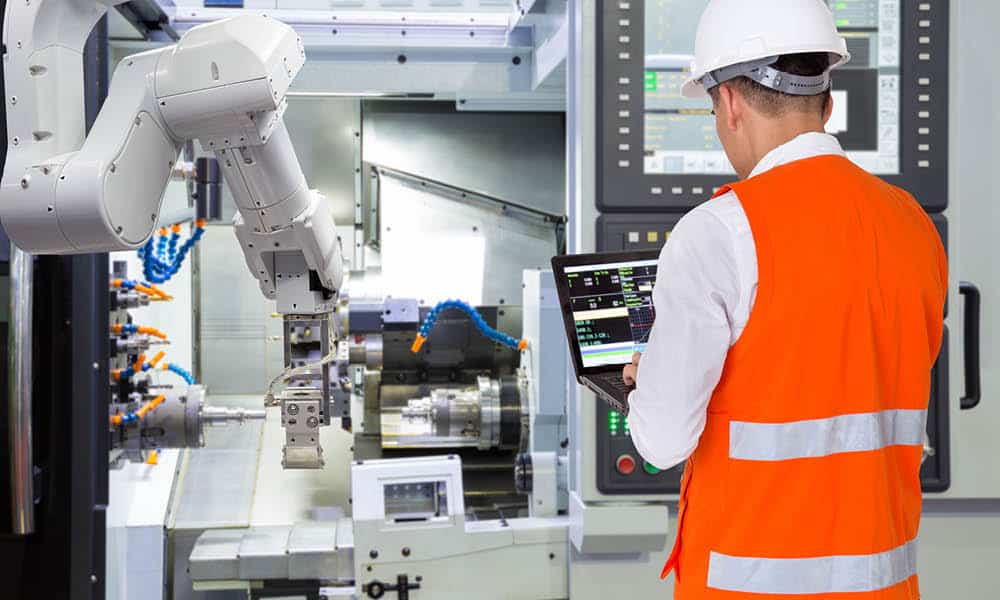
Advanced networks and intelligent technologies are creating agile, secure and high-performing smart factories.

TAKEAWAYS:
● AI combined with fiber optics, 5G and edge computing is revolutionizing manufacturing.
● Real-world examples like digital twins, autonomous logistics and AI quality control show how this integration improves performance and flexibility.
● A strong framework of sensing, edge computing, hybrid networks, cloud analytics, workforce readiness and security is key to successful AI deployment in factories.
Advanced manufacturing is quickly changing from traditional assembly lines into smart, connected systems.
This shift is being fueled by the powerful combination of artificial intelligence and new connectivity technologies like fiber optics, 5G and edge computing. Together, these innovations help factories run more efficiently, flexibly and smoothly, ushering in a new age of smart manufacturing.
Connectivity: The foundation of AI-driven manufacturing
AI works best in manufacturing when it can quickly access and process massive amounts of data. That’s why strong connectivity is a key foundation for modern smart factories.
Fiber optics: The fast data highway
Fiber optic networks deliver extremely high bandwidth and low latency, which is essential to handle the large data streams from IoT sensors, machines and AI systems.
Unlike copper or wireless links, fiber offers stable, interference-free connections critical for time-sensitive manufacturing operations. This infrastructure supports centralized AI analytics, seamless inter-factory communications and cloud integration, helping smooth the flow of information and control commands.
Fiber connections also enhance security because they are less vulnerable to electromagnetic interference and eavesdropping, helping to protect sensitive manufacturing information from cyberattacks.
5G networks: Wireless freedom and scalability
While fiber serves fixed infrastructures, 5G offers wireless flexibility with multi-gigabit speeds and near-real-time responsiveness.
At industrial sites, 5G enables mobile robots, autonomous guided vehicles (AGVs) and wireless sensors to operate without the constraints of cables. In addition, 5G cellular signals travel farther and propagate better in challenging environments, which enables both workers and machines to get a more reliable connection to complete the workflow with more efficiency.
At non-industrial campuses, 5G enables dedicated airwaves that are not subject to the same interference challenges you get with unlicensed spectrum such as Wi-Fi, which means better overall performance.
The ability of 5G to create network slices means manufacturers can dedicate bandwidth and low-latency channels to mission-critical applications, helping to ensure that control signals have priority over less urgent data. This wireless freedom allows rapid reconfiguration of production lines and material flows without the expense and downtime of physical rewiring.
Moreover, 5G includes strong built-in security like encryption, authentication and network isolation, which helps protect important manufacturing processes from hacking and unauthorized access.
Edge computing: Smart processing close to the source
Edge computing tackles the delay and bandwidth challenges that come with sending all data to distant clouds.
By processing data locally on edge devices or gateways, AI models can make instantaneous decisions critical for real-time tasks such as quality inspection, machine control and safety monitoring. Edge computing also reduces network congestion and enhances data privacy, since sensitive information doesn’t always have to travel to the cloud. This hybrid approach balances the scalability of cloud computing with the responsiveness of edge processing.
Processing data at the edge minimizes exposure of sensitive operational data over networks, reducing the attack surface and enabling stronger data control and compliance with security policies.
Practical AI use cases in smart manufacturing
Digital twins for process optimization
One AT&T client, a major industrial equipment manufacturer, has successfully implemented AI combined with digital twin technology to optimize complex production processes.
Digital twins are precise virtual replicas of physical machines and factory operations, continuously fed real-time data from a dense network of sensors connected via fiber optics. AI algorithms compare digital twin simulations with actual performance, applying reinforcement learning to identify optimal process parameters. This dynamic adjustment improves yield, reduces energy use and minimizes waste.
Simultaneously, predictive maintenance models running on edge devices analyze vibration, temperature and acoustic data to forecast equipment failures. This shifts maintenance from reactive or scheduled downtime to prescriptive, condition-based interventions that minimize disruptions and extend equipment life. Centralized AI analytics platforms, supported by fiber optic connectivity, aggregate data across facilities for cross-site benchmarking and continuous improvement, fostering a data-driven, adaptive manufacturing environment.
Throughout these processes, robust cybersecurity measures such as encrypted data transmission, device authentication and continuous monitoring are critical to protecting the integrity of sensor data and AI models from tampering or cyber intrusions.
5G-enabled autonomous logistics
Another client, operating a large manufacturing plant, leverages AT&T wireless 5G connectivity to support a fleet of autonomous guided vehicles transporting components and finished goods.
The AGVs depend on reliable, low-latency communication to navigate dynamic factory layouts safely. A private 5G network employs a dedicated, local cellular network to help ensure mission-critical control signals have the coverage and capacity needed. Network slicing can take that coverage to another level by further prioritizing and partitioning resources to specific endpoints so in times of congestion, the mission critical endpoints get the resources needed. Onboard AI inference engines process sensor inputs in near real time, enabling immediate navigation and obstacle avoidance without delay.
This 5G-enabled wireless freedom allows the client to rapidly reconfigure production lines and material flows, avoiding costly rewiring or infrastructure changes. A centralized orchestration platform monitors the AGV fleet and dynamically assigns tasks to align with production schedules.
This setup highlights how combining AI with 5G connectivity removes physical constraints, enhances scalability and increases operational flexibility in manufacturing logistics.
The private 5G network environment also offers enhanced security by isolating critical communications from public networks, implementing strict access controls and enabling real-time threat detection to prevent unauthorized interference with autonomous vehicle operations.
AI-driven quality control at the edge—and in the cloud
A manufacturer specializing in high-precision components has revolutionized quality control by deploying AI-powered vision inspection systems integrated with edge and cloud computing.
High-speed industrial cameras capture tens of thousands of images per hour, transmitting them via fiber optics to edge servers where AI models perform real-time defect detection. These deep learning models help identify surface imperfections, dimensional deviations and assembly errors with accuracy surpassing human inspectors.
The AI systems continuously learn and adapt to new defect patterns emerging on the production line, helping to ensure consistent precision detection as product designs evolve. When defects are detected, immediate automated feedback loops remove faulty items and alert operators, reducing scrap and rework.
Meanwhile, aggregated data is sent to cloud platforms for long-term analytics and AI model retraining. This hybrid edge-cloud architecture balances the need for ultra-low latency responses with scalable training and analytics, underscoring the critical role connectivity plays in intelligent, responsive quality assurance.
Securing both edge and cloud environments with encryption, multi-factor authentication and compliance with data privacy standards helps ensure that sensitive product quality data remains protected while enabling effective AI-driven insights.
A framework for AI and connectivity integration
An effective framework for deploying AI and connectivity in manufacturing could include:
- Sensing and data acquisition: A dense array of diverse IoT sensors—measuring vibration, heat, light and sound—form the data foundation. These connect through a mix of fiber optics for fixed, high-speed links and 5G for wireless flexibility. Proper sensor calibration helps ensure data quality.
- Edge computing layer: Rugged edge devices run AI models locally for tasks needing fast response. Containerized AI allows easy updates and scaling for real-time detection, control and inspection without relying only on the cloud.
- Connectivity infrastructure: A hybrid network blends fiber optics’ high bandwidth and low latency with 5G’s mobility and scalability. Network slicing and Quality of Service (QoS) prioritize critical traffic to keep safety and control systems running smoothly. Security protocols like encryption and continuous monitoring protect data from cyber threats.
- Cloud and centralized analytics: Cloud platforms gather data from multiple edges for advanced AI training, trend analysis and factory benchmarking. They offer easy-to-use dashboards and decision tools to help operators and managers.
- Integration and orchestration: AI systems connect seamlessly with Manufacturing Execution Systems (MES), Enterprise Resource Planning (ERP) and supply chain software for closed-loop automation. AI insights automatically adjust processes or alert staff, while humans oversee and improve operations.
- Ethical and workforce considerations: Transparent AI models build trust, especially for safety-critical uses. Training programs boost employee skills in AI and data to prepare them for working alongside AI. Strong data governance helps ensure compliance and privacy.
Strategic benefits and the future of smart manufacturing
The convergence of AI and connectivity goes beyond incremental improvements to fundamentally reshape manufacturing capabilities:
- Operational efficiency: Predictive maintenance and process optimization reduce downtime and resource use.
- Quality excellence: Real-time adaptive vision inspection improves product consistency and reduces waste.
- Logistical agility: Wireless 5G helps enable flexible material handling and rapid factory reconfiguration.
- Supply chain resilience: Integrated AI analytics provide end-to-end visibility and proactive disruption management.
- Workforce empowerment: Collaborative AI tools augment human expertise, fostering innovation and upskilling.
For leaders, adopting AI and connectivity as linked strategies is key.
Building these technologies into unified digital systems tailored to each factory’s needs will be vital for staying competitive. As these technologies evolve, future smart factories will use even smarter AI, quantum computing and next-gen connectivity to create truly autonomous, self-optimizing manufacturing.
Making sure these future systems have security built in from the start is crucial to protect valuable knowledge, keep operations running and build trust in fully autonomous factories. M
About the Author:

Ande Hazard is Vice President of Manufacturing, Transportation and Financial Services solutions, AT&T Business
How the C-suite Can Drive Results for AI Success
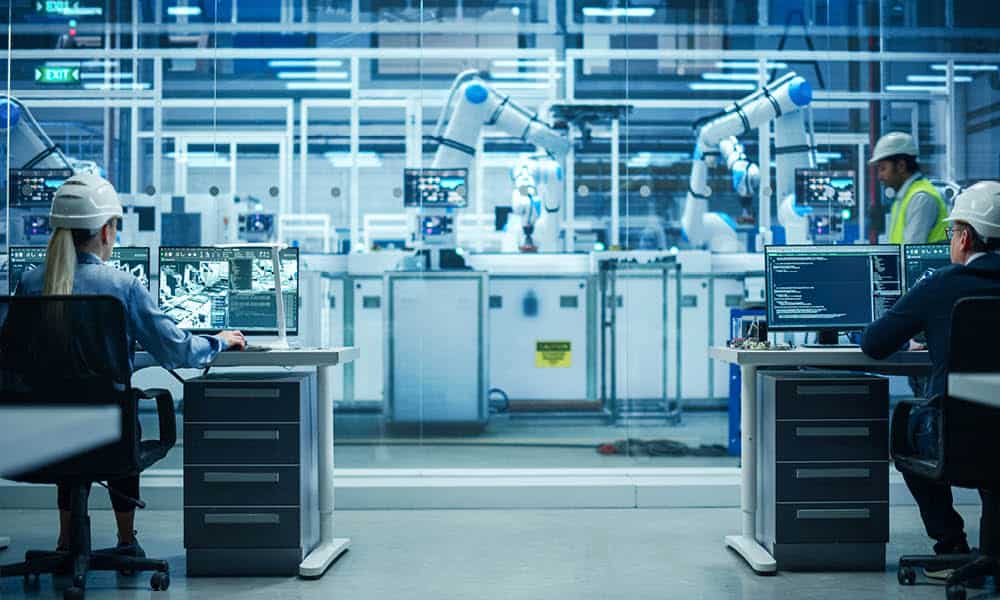
For companies to achieve truly transformative generative AI, they need six key pillars.

TAKEAWAYS:
● Your organization likely has far more GenAI ideas than available resources; a vital component is a control tower for oversight, focus, and governance.
● Data maturity, strategic alliances, and talent are also essential elements of a forward-thinking AI strategy, beyond the technology itself.
● Leaders must resist the impulse to fit GenAI into existing processes and business models and instead reimagine them entirely.
You likely have hundreds of generative AI (GenAI) use cases and may have seen some early success with prototypes. Perhaps you also have the sandboxes for controlled experiments, buy-in from key executives, and a healthy budget for testing and development. Yet, after a year, you may find that you are still struggling to move quickly enough to mitigate competitive risks and confidently turn possibilities into opportunities—to truly transform your business.
Following another strangely resilient yet uncertain economic year, C-suites and boards in the US expect to see cost savings, greater efficiencies, and added revenue from GenAI implementation, according to a recent EY AI survey. To some extent, GenAI infrastructure and processes resemble those used for regular artificial intelligence (AI), which some companies have leveraged for decades. However, these often involve more basic automation projects, and important distinctions regarding GenAI must be addressed:
- The sourcing, management, and preconditioning of data vital for training GenAI algorithms and creating outputs for different stakeholder groups;
- Ethical frameworks that provide guardrails for a technology whose upsides and downsides are not yet fully defined;
- Partner ecosystems to enable organizations to cost-effectively keep pace with the future and gain additional data sets to enrich their large language models and knowledge repositories; and
- Change management for employees who are concerned about how GenAI will impact their careers and responsibilities.
Success can be found in the narrow, overlapping center of these functional areas—and the payoff for those who reach the center first can be enormous. We see that truly transformative GenAI capabilities are built on six pillars.
Pillar 1: Establish an AI Control Tower
A control tower effectively oversees use cases and investments across the organization, helping to set priorities and avoid duplicated efforts.
Voluminous GenAI use cases all compete for time, attention, and resources. Many companies are wasting money on duplicated efforts, some of which exist in shadowy corners without proper governance, creating potential reputational risks. Companies may not even know where all their AI models are deployed. This blind spot will become increasingly threatening as regulations take shape in the US and globally, particularly impacting industries such as financial services, energy, and health care.
As a catalyst for the new age of GenAI, a control tower—not individual functions—relentlessly focuses on deriving value from AI and GenAI. This approach ensures that time, money, and effort are spent wisely, efficiently channeling enthusiasm in positive directions while establishing oversight and guardrails. Many AI and GenAI solutions exhibit common patterns and can benefit from reusable assets that accelerate time to value and reduce costs. Without a control tower, different groups across an enterprise risk building very similar solutions from scratch for various use cases. The control tower effectively governs organizational investments and value creation by identifying patterns across various use cases that align with business needs and prioritizing the development of GenAI solutions.
Pillar 2: Reimagine Future Business Models and Functions
C-suites are increasingly focused on how technology integrates into current operations and business models rather than how it will redefine the future.
It’s natural to try to fit a new advancement into existing frameworks. During the Industrial Revolution, it took time for planners to redesign cities for automobiles instead of horses, and to rethink manufacturing plant designs after steam engines became obsolete. GenAI is poised to be equally transformative.
Consider procurement. You could automate the first five steps of reviewing requests for proposals: a GPT generates a content comparison that highlights which proposals meet the requirements and how they differ, with references pointing to page numbers within each document. Instead of spending four weeks on redlining, you could reduce this to one week—a significant gain in efficiency for a process that, while important, is not core to your organization’s mission.
The truly transformative impact lies in completely reimagining front office operations, rather than merely streamlining back office processes. GenAI unlocks new products, services, and business models that can easily be overlooked if approached with a robotic process automation mindset. This reimagining may include creating new products and features enabled by GenAI, offering them through pay-as-you-go service subscription models, selling directly to consumers instead of via intermediaries, and leveraging consumer data for insights—potentially even selling that data as a separate revenue stream. Amidst all this change, one timeless truth remains: if you don’t innovate first, your competitors will.
Pillar 3: Ensure Confidence in AI
The initial excitement surrounding GenAI may fade during the first few sprints after deployment, as the transformative potential confronts the messy reality. Continuous testing and governance are essential.
Does your GPT provide perplexing answers, veer down incorrect paths, or even “hallucinate”? Does it have access to the right amount of data—or perhaps too much?
In control towers, processes and rules must govern the creation and maintenance of algorithms and models. This includes mitigating bias, enforcing fairness, and ensuring explainability and transparency from the moment the AI model is created through its ongoing management. From the outset, data security and integrity are crucial. Often, the type of data required for GenAI differs from that used in typical AI; it does not exist in neat rows and tables but rather in chat logs, emails, surveys, and more, necessitating far greater preconditioning.
Leaders in a control tower also must define their ethical compass concerning GenAI and its alignment with company values. As a consumer, would you feel better or worse knowing that a GenAI model was guiding your investment decisions or healthcare diagnoses? Organizations must address these questions before deploying GenAI, not after. EY leaders have oriented the company’s AI efforts around fairness, accountability, and reliability. These principles are not just words; each corresponds to metrics that measure the confidence of any particular solution we deploy. The EY organization, ServiceNow, and others are assisting companies in defining, enforcing, and testing their AI principles.
It may seem paradoxical, but keeping humans in the loop is essential for building confidence in GenAI. Are the individuals who will ultimately be affected by GenAI included in its design, development, testing, and deployment? One effective approach is reinforcement learning: people play a crucial role in training the models and evaluating the outputs of a GenAI chatbot or algorithm, helping it discern what is useful and what is not. Without this involvement, the efficacy of the models diminishes. Furthermore, it is vital to have mechanisms in place to allow these individuals to flag issues and provide feedback on what isn’t working well, which responses are incorrect, and which outcomes do not align with business needs.
GenAI algorithms and outputs must undergo rigorous scrutiny. Consider the chatbots designed for specific purposes that can be manipulated into generating hate speech, disclosing intellectual property, or informing customers about nonexistent company policies. Algorithms tailored for particular tasks can also evolve in ways that may appear mysterious to outsiders, lacking “explainability.” Red teams—resources that assume adversarial roles to challenge AI—are crucial for validating these efforts through independent monitoring.
The EY.ai Confidence Index provides a framework to help organizations navigate these pitfalls, enhancing the reliability and explainability of responsible AI to support better decision-making and more efficient operations.
Pillar 4: Address Talent and Tech Gaps
The buzz surrounding GenAI may wane in the first few sprints after deployment, as its transformative potential meets the complexities of reality. Continuous testing and governance are essential.
A key takeaway from launching our internal GenAI model to 400,000 EY employees was the importance of providing training alongside tools. This finding was further reinforced by the results of the EY AI Anxiety in Business survey, which revealed that 80 percent of employees would feel more comfortable with AI if they received training, yet 73 percent reported not receiving the necessary coaching. The survey indicates that employees are already using these tools at work, and desire a deeper understanding of responsible AI practices.
What will help people feel more comfortable using AI at work?
On the technology side, many organizations grapple with a familiar question: Should I build what I need, buy it, or pursue a combination of the two—such as augmenting existing software or building on established platforms using my intellectual property? There’s no substitute for debate and planning, even in an unsettled technology landscape. You might decide to hold off on investing in financial GenAI applications because you believe your current enterprise resource planning systems will eventually incorporate that functionality. However, it may be worthwhile to pursue GenAI tools customized to your specific needs through the product development lifecycle. This discussion is not solely about identifying gaps exist but also about the methods for addressing them.
Pillar 5: Develop an Ecosystem of Alliances
AI is a complex technology that impacts every level of an organization. To stay ahead of the curve—or even to reach the median level of maturity—organizations need to establish partnerships.
Many organizations tend to focus on yesterday’s teams while considering how they will tackle tomorrow’s challenges. It’s important to recognize that a different workforce and new ways of thinking will be necessary to address business needs beyond today’s core operations. A rapidly changing world demands new solutions, fresh data sets, and capabilities that few companies can provide internally. Currently, plug-and-play and single-point systems that automatically generate solutions based on unique needs and data sets don’t exist; features that seemed innovative last year can quickly become outdated.
A robust ecosystem of alliances enables your company to quickly and flexibly fill those gaps while adapting to the evolving landscape. Defining a strategy for what you need and how to expedite it is crucial—whether your organization is a pharmaceutical giant using highly sensitive drug trial data or a consumer products company seeking greater automation for its service agents. Is proprietary data your core market differentiator that you will use to train a model? This question is vital, as the strategic path becomes clearer if your proprietary data provide a competitive advantage.
Consider alliances in four categories:
- Technology partners: Rely on them for guidance, innovation, and even experimental funding.
- Academics: These partners can be invaluable for hypothesis testing, research, guidance, and thought leadership.
- Professional services organizations: They can help you navigate the entire landscape, identify strategies and sources of value, and even assist in building solutions to capitalize on that value.
- Data partners: Your sector as a whole may benefit more from a data consortium, particularly in areas that do not specifically differentiate your organization. (For example, consider patient data across health systems, while being mindful of privacy regulations.)
Pillar 6: Drive Focused Data Maturity to Be AI-Ready
Data quality is more important than ever; however, if you wait until all your data are perfect and trusted before testing your use cases, you may be waiting indefinitely.
Focused data maturity is key: not every piece of data needs to be pristine to be included in your GPT. This distinction is crucial as we navigate regulations.
You need an enterprise-wide, fit-for-purpose data strategy that is governed tightly by how data will be used. For example, if you plan to have a GenAI application that customers will use to obtain information about products, that product data will need to be highly managed and governed, while other data may fall outside that scope. Your data strategy should guide your investments effectively, targeting your highest priorities rather than attempting to “boil your data ocean.” Here are the key needs to address:
- Accessibility at scale: A high volume of historical information should be available for exploration and production use with fast processing.
- Visibility: The ability to understand the data, both technically and in a business context, while easily locating data across systems and sources.
- Timeliness: Up-to-date data files with reasonable data latency, providing what’s needed for each use case (for example, in real time or in batches).
- Openness: Support for multiple file types and formats (including text, numbers, and images) using consistent tools across the platform.
- Reliability: Data pipelines that minimize breakage, limit the amount of missing data, and maintain consistency from one update to the next.
- Expansiveness: Consistency across the global enterprise, enabling connections between customers and products across different regions and business units.
- Trust and security: The ability to execute AI use cases responsibly with data that are secured and accessible only to those who need it.
Summary
With an AI control tower, you empower everyone to contribute while designating one group to drive focus, oversight, and business alignment for reusable assets, all while emphasizing responsible AI practices. Technology is just one piece of the puzzle: you also must upskill personnel, secure alliance partnerships, and prepare your data for AI. Never lose sight of how you must reimagine your organization for tomorrow, not just today. M
About the authors:

Traci Gusher is EY Americas AI and data leader.

Matthias Loh is EY Americas FSO technology consulting leader.
MLC Announces 2025 Manufacturing Leadership Award Winners

The NAM’s digital transformation division has announced the winners of this year’s Manufacturing Leadership Awards, accolades given to the most outstanding companies, teams and individuals leading manufacturing into the next era.
What’s going on: The Manufacturing Leadership Council named Celanese as its Large Enterprise Manufacturer of the Year, Pure & Gentle, Inc. as the winner in its Small-Medium Enterprise Manufacturer of the Year category and Besu Alemayehu of Merck & Co., Inc. as its 2025 Manufacturing Leader of the Year.
- The winners were announced last week at the MLC’s 2025 Manufacturing Leadership Awards Gala in Marco Island, Florida. It was the culmination of Rethink: Accelerating Digital Transformation in Manufacturing, the organization’s flagship event focused on strategies that advance digital transformation in manufacturing operations.
Why they were picked: Global chemistry company Celanese was chosen owing to its many achievements in digital transformation, including an artificial intelligence-powered digital platform that increases employee productivity and improves decision-making.
- Personal care product manufacturer Pure & Gentle won in its category for use of digital technology to monitor and boost sustainability, as well as for its creation of a work culture that fosters high levels of employee engagement.
- Merck Senior Vice President of Digital Manufacturing and Chief Digital and Technology Officer Alemayehu was recognized for leading digital initiatives that have increased business value and for partnering with senior leadership across the company in key functions.
There’s more: The award ceremony included a memorial tribute to former Lexmark Chief Sustainability Officer John D. Gagel, also a former member of the MLC Board of Governors, recognizing his lasting contributions to manufacturing and transformational leadership.
Our take: “The winners of the Manufacturing Leadership Awards represent the kind of bold and innovative thinking that will propel our industry into the future,” said NAM President and CEO Jay Timmons.
- “Every project and individual recognized in the Manufacturing Leadership Awards represents movement toward a future state of Manufacturing 4.0,” said MLC Founder, Executive Director and Vice President David R. Brousell.
Read more: See a full list of this year’s winners and finalists here.
Merck, Celanese and Pure & Gentle Named Top Winners in Manufacturing Leadership Awards Competition
Marco Island, Florida – The Manufacturing Leadership Council, the digital transformation division of the National Association of Manufacturers, last night announced the winners of the annual Manufacturing Leadership Awards. The MLC named Merck & Co. Senior Vice President, Digital Manufacturing and Chief Digital and Technology Officer Besu Alemayehu the 2025 Manufacturing Leader of the Year. By leading digital initiatives that drive business value and partnering with senior leaders across key functions, Alemayehu has guided Merck’s manufacturing operations toward a digital-first business model successfully.
The MLC named Celanese the Large Enterprise Manufacturer of the Year in recognition of its achievements in digital transformation, including an AI-powered digital platform that boosts worker productivity and improves decision-making. The MLC named Pure & Gentle the Small/Medium Enterprise Manufacturer of the Year for its use of digital technology to track and improve sustainability practices and for excellence in developing a high-performing business culture with a high level of employee engagement.
“The winners of the Manufacturing Leadership Awards represent the kind of bold and innovative thinking that will propel our industry into the future,” said NAM President and CEO Jay Timmons. “Manufacturers are using the latest cutting-edge technologies to strengthen our economy, improve business processes and, ultimately, better the lives of Americans across the country. These leaders understand the vast potential of Manufacturing 4.0 technologies, and we are proud to recognize them for their best-in-class leadership.”
The award ceremony also featured a memorial tribute to John D. Gagel, former chief sustainability officer at Lexmark and former member of the MLC Board of Governors, in recognition of his lasting contributions to the industry and transformational leadership.
The gala took place the evening of June 18 at the JW Marriott Marco Island Beach Resort and was the closing event for Rethink: Accelerating Digital Transformation in Manufacturing, the MLC’s flagship event on strategies to advance digital transformation in manufacturing operations.
“Every project and individual recognized in the Manufacturing Leadership Awards represents movement toward a future state of Manufacturing 4.0,” said MLC Founder, Executive Director and Vice President David R. Brousell. “Digital has become a must-have, and the cohort that is demonstrating digital leadership today will be reaping the competitive rewards tomorrow.”
Manufacturing Leadership Award finalists and winners are determined by a distinguished panel of judges with significant industry expertise and experience. The judges also conferred honors on the following category winners:
Artificial Intelligence Vision and Strategy
Celanese
Business Model Transformation
ArcelorMittal
Collaborative Ecosystems
Humtown
Whirlpool
Digital Supply Chains
Flex
Engineering and Production Processes
GM Defense
Enterprise Integration and Technology
Celanese
General Motors
Operational Excellence
Thermo Fisher Scientific
Sustainability and the Circular Economy
Niron Magnetics
Transformational Business Cultures
Pure & Gentle
Digital Transformation Leadership
Besu Alemayehu, Merck
Jim Wetzel, NxGen Group
Next-Generation Leadership
CisLee Trost, CertainTeed
Women in Digital Transformation
Giovanna Benetti, IBM
Renee Sherry, General Motors
Manufacturer of the Year – Small/Medium Enterprise
Pure & Gentle
Manufacturer of the Year – Large Enterprise
Celanese
Manufacturing Leader of the Year
Besu Alemayehu, Merck
The 2026 Manufacturing Leadership Awards will open to nominations on Sept. 15, 2025. For more information about the awards, visit https://manufacturingleadershipcouncil.com/leadership-awards/.
-MLC-
Founded in 2008 and now a division of the National Association of Manufacturers, the Manufacturing Leadership Council’s mission is to help manufacturing companies transition to the digital model of manufacturing by focusing on the technological, organizational and leadership dimensions of change. With more than 2,500 senior-level members from many of the world’s leading manufacturing companies, the MLC focuses on the intersection of advanced digital technologies and the business, identifying growth and improvement opportunities in the operation, organization and leadership of manufacturing enterprises as they pursue their journeys to Manufacturing 4.0.
Welcome New Members of the MLC June 2025
Introducing the latest new members to the Manufacturing Leadership Council

Learn more about MLC membership.

Keith Belevender
VP Operations, HSEQ (Americas)
SAF-Holland
![]()
https://safholland.com/us/en/
![]()
https://www.linkedin.com/in/keith-belevender-1831981/

Ger Carmody
Senior Vice President, Global Pharmaceutical Operations & Operational Excellence
Merck & Co., Inc.
![]()
https://www.merck.com/
![]()
https://www.linkedin.com/in/ger-carmody-62766516/

Josh Chou
Chief Supply Chain Officer
McCormick & Company

https://www.mccormick.com/
![]()
https://www.linkedin.com/in/josh-chou-47a1897/

Ty Hutchens
COO
Hutchens Industries

https://www.hutchensindustries.com/
https://www.oemoffhighway.com/drivetrains/press-release/10733989/hutchens-industries-announces-personnel-changes

Hugo Alberto Gomez Sierra
CEO
Condumex
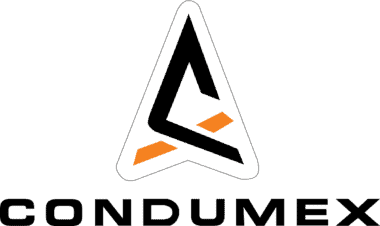
https://condumexinc.com/
![]()
https://www.linkedin.com/in/hugo-gomez-a2370011/

Mikell Taylor
Chief Autonomous Robotics Technologist
General Motors

https://www.gm.com/
![]()
https://www.linkedin.com/in/mikelltaylor/
Decarbonizing Scope 3 Emissions through Circular Strategies

Circular economy strategies offer potential benefits and opportunities to decarbonize scope 3 GHG emissions.

TAKEAWAYS:
● As companies accelerate their decarbonization journeys, Scope 3 emissions often present a challenge.
● Although Scope 3 is often the largest portion of a company’s carbon footprint, Scope 3 decarbonization levers are more difficult to identify and implement.
● Circular economy has emerged as an opportunity for the activation of meaningful decarbonization levers across the value chain.
Scope 3 greenhouse gas emissions originate from assets that businesses use that are not directly owned or controlled by the organization. Also known as value chain emissions, they emerge from corporate supply chains, transportation, and product usage or disposal. For many businesses, Scope 3 emissions represent the largest source of GHG emissions, averaging 75% of total emissions, according to CDP, a global non-profit that runs an independent environmental disclosure system for companies, capital markets, cities, states and regions. However, measuring and reducing these emissions pose significant challenges for organizations due to unreliable data and limited operational control over activities across their extended value chains.
Despite these hurdles, the pressure for companies to accurately calculate, disclose and reduce Scope 3 emissions has intensified. Key drivers include recent regulations such as the European Union’s Corporate Sustainability Reporting Directive (CSRD), the International Sustainability Standards Board (ISSB) and actions being taken in California and elsewhere. Companies are increasingly focused on submitting science-based reduction targets and credible climate transition plans, which has led to greater attention on Scope 3 emissions.
The Greenhouse Gas Protocol defines 15 categories of Scope 3 emissions; this article focuses on categories 1 (purchased goods and services), 11 (use of sold products) and 12 (end-of-life treatment of sold products), highlighting opportunities for GHG reduction through circular economy initiatives.
The Circular Economy’s Potential
The circular economy is a transformative approach that reimagines business interactions to create long-term value while promoting economic growth and ecological impacts. Circular strategies have significant decarbonization potential, with some models estimating a 56% reduction in emissions compared to traditional practices. Additionally, it is estimated that the circular economy could unlock $4.5 trillion in economic opportunities by 2030. However, its potential remains largely untapped, particularly concerning Scope 3 emissions.
Category 1: Purchased goods and services
Category 1 emissions encompass all upstream emissions from the production of products purchased by a company. A major challenge in managing these emissions is obtaining reliable supplier-specific data.
For companies using spend-based or average-data methodologies, the primary decarbonization lever is reducing spending with high-emitting suppliers. Those with access to supplier-specific data can engage suppliers directly to reflect emissions reductions across the value chain.
Circular strategies for decreasing Scope 3 Category 1 emissions:
- Circular procurement: This strategy seeks to close energy and material loops in supply chains while minimizing waste. Companies can prioritize suppliers that demonstrate circularity, such as those using circular design principles or offering take-back schemes. By incorporating circularity metrics in supplier evaluations, companies can shift spending toward suppliers with better circular performance.
- Supplier engagement: Engaging suppliers is crucial for driving meaningful change across the value chain. Companies can enhance supplier capacity through education on circular design principles and collaboration on circular material R&D. This approach can help reduce emissions from new product production and lower the carbon intensity of manufacturing processes.
Category 11: Use of sold products
Category 11 emissions arise from the use of goods and services sold by a company, including Scope 1 and 2 emissions of end users. These emissions can be divided into direct and indirect use-phase emissions, with the majority stemming from direct use.
Circular strategies for Category 11 emissions:
- Enhancing product efficiency: Improving product efficiency can be achieved through lightweighting, simplifying materials, and enhancing energy efficiency. For example, using lighter materials in automobiles improves fuel efficiency and reduces emissions.
- Utilizing renewable energy: Supporting the transition to clean energy sources, such as electrification of vehicles, can significantly reduce emissions. Electric vehicles (EVs) produce lower emissions, especially when powered by renewable energy. Electrification of passenger vehicles has increased over the last few years with a projected 20 million EVs by 2030.
- Modular design: Designing products for easy repair and remanufacture extends their lifecycle. Modular design allows for upgrades and customization, which can reduce energy consumption over time.
Category 12: End-of-life treatment of sold products
Category 12 emissions result from the disposal and treatment of sold products at the end of their life. To reduce these emissions, companies can focus on two main levers: reducing the mass of sold products and increasing the proportion of waste that is recycled.
Circular strategies for Category 12 emissions:
- Reuse: Companies are exploring reusable packaging to decrease the mass of materials sent to landfills. Standardized containers can facilitate this strategy, aligning with product-as-a-service models.
- Recycling: Implementing recycling strategies can redirect waste from landfills to recycling streams. The automotive industry, for example, has established take-back programs for used cars and collaborates on recycling lithium-ion batteries.
Looking ahead to a low-carbon economy
Circular strategies provide effective decarbonization levers across Scope 3 categories 1, 11 and 12. As pressure mounts for companies to decarbonize, strategies such as reuse, remanufacture, supplier engagement and enhanced modular design offer actionable steps to navigate the “Scope 3 dilemma.” By leveraging these strategies, businesses can contribute to a low-carbon economy while unlocking new opportunities for growth. M
The views reflected in this article are the views of the author(s) and do not necessarily reflect the views of Ernst & Young LLP or other members of the global EY organization.
About the author:

Mark Weick is Managing Director, Climate Change and Sustainability Services, at Ernst & Young LLP